Powerful photos and stories from the caravan show migrants' harrowing journey to the US
)
About 7,000 Central Americans have fled their crime-ridden and violent homelands in the Northern Triangle for the US border in what has become the largest caravan to date.
Migrants in the Honduran city of San Pedro Sula first formed the unplanned northbound caravan on October 13. Others have fled from El Salvador and Guatemala to also embark on the 2,700-mile journey toward the United States.
Conditions along the way are not great — the heat is sweltering , the days are long, and food and shelter are not always readily available.
To prevent the caravan from growing too large in size, Mexico has offered the opportunity to claim asylum there instead of the US. But most migrants have rejected the proposal.
"The United States is better," Honduran migrant Glenda Escobar told Reuters. "For everything."
Here's what it's like for migrants who have walked thousands of miles to seek asylum in the US.
Multiple caravans of Central American migrants 7,000-strong have traveled thousands of miles through Guatemala and Mexico to seek asylum in the United States.
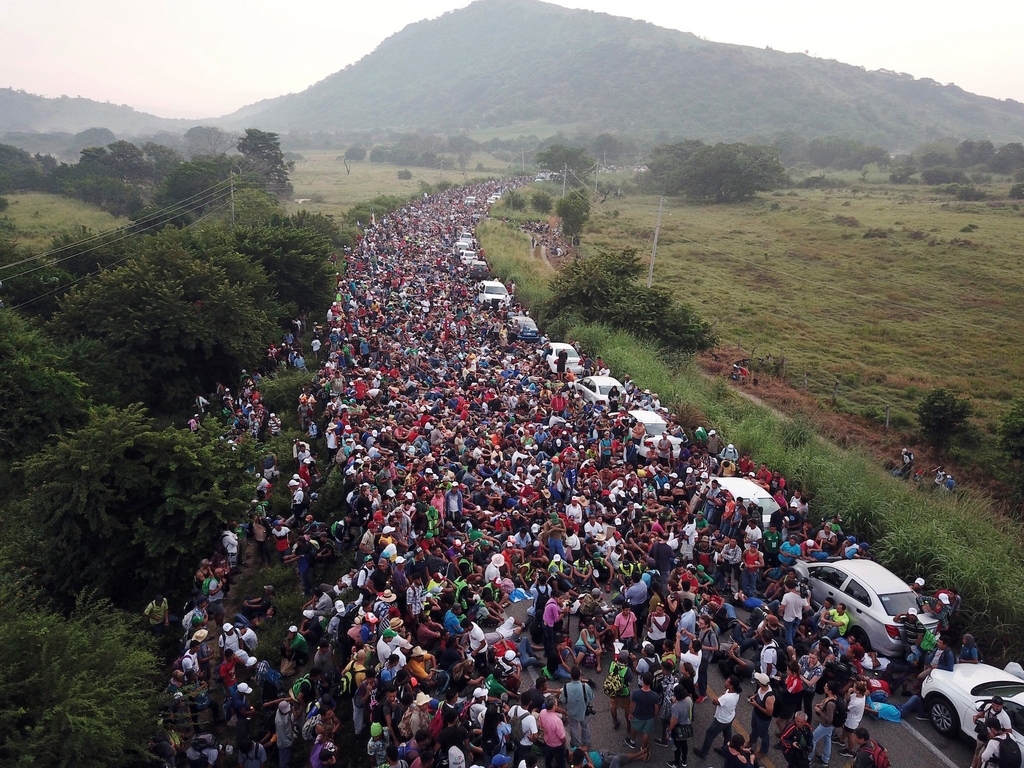
Rodrigo Abd/AP
Source: Business Insider
Mostly from Honduras and El Salvador, many caravan members fled their crime-ridden and poverty-stricken homelands in search of better lives.
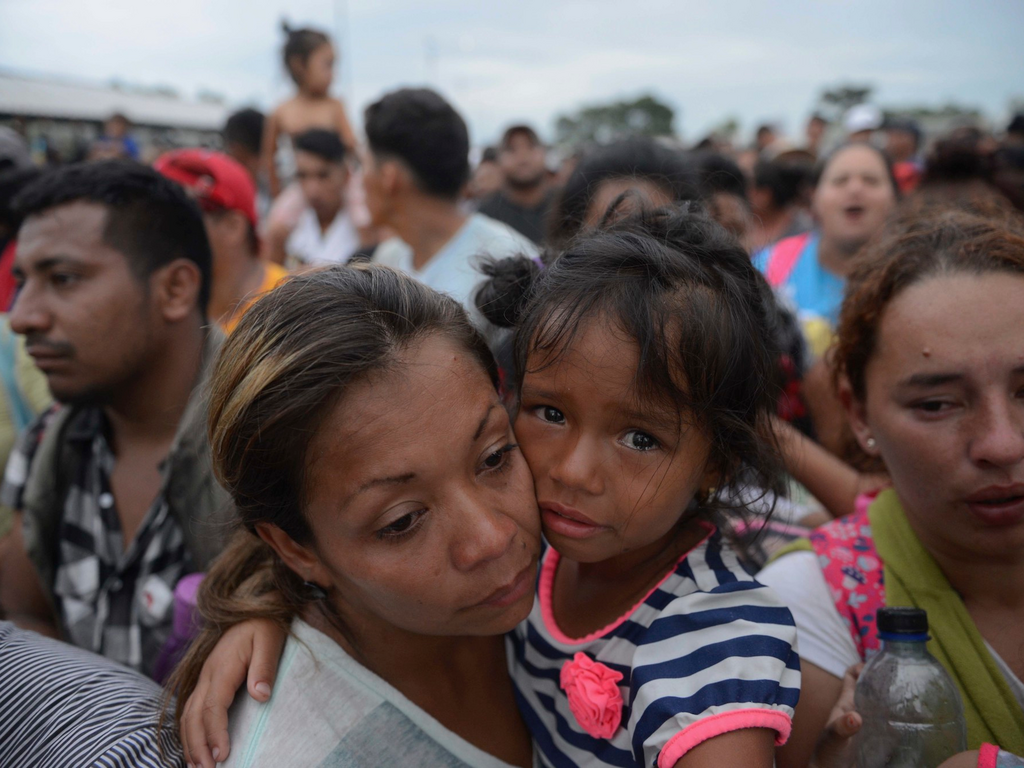
Oliver de Ros/AP
Source: Business Insider
The first wave of the caravan set out of San Pedro Sula, Honduras, northward toward the United States on October 13.
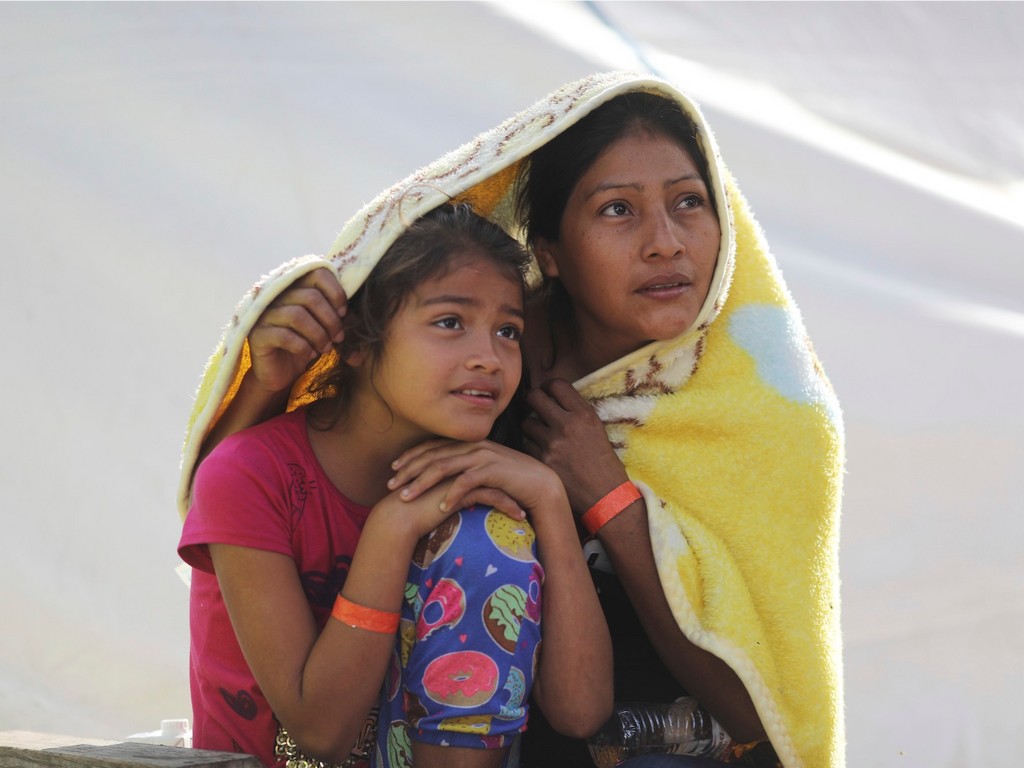
Rodrigo Abd/AP
Source: Business Insider
Others joined from El Salvador. Hundreds of them had to cross through a border checkpoint located on a bridge that connects Guatemala to Mexico.
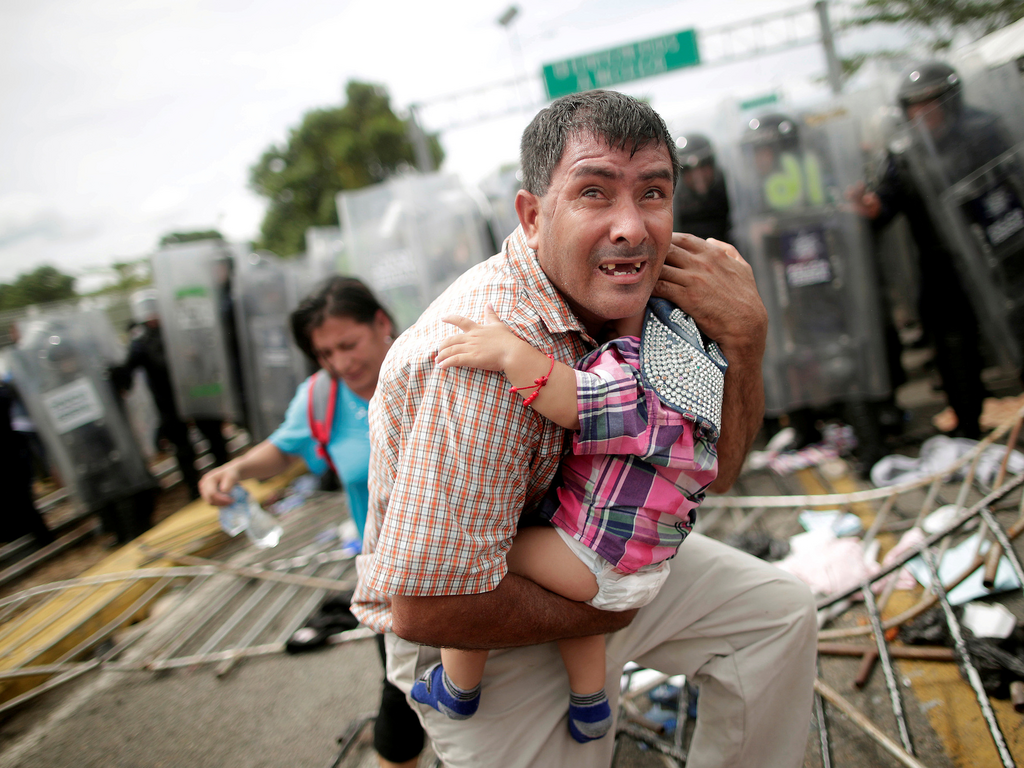
Ueslei Marcelino/Reuters
Source: Reuters
Mexican police blocked them.
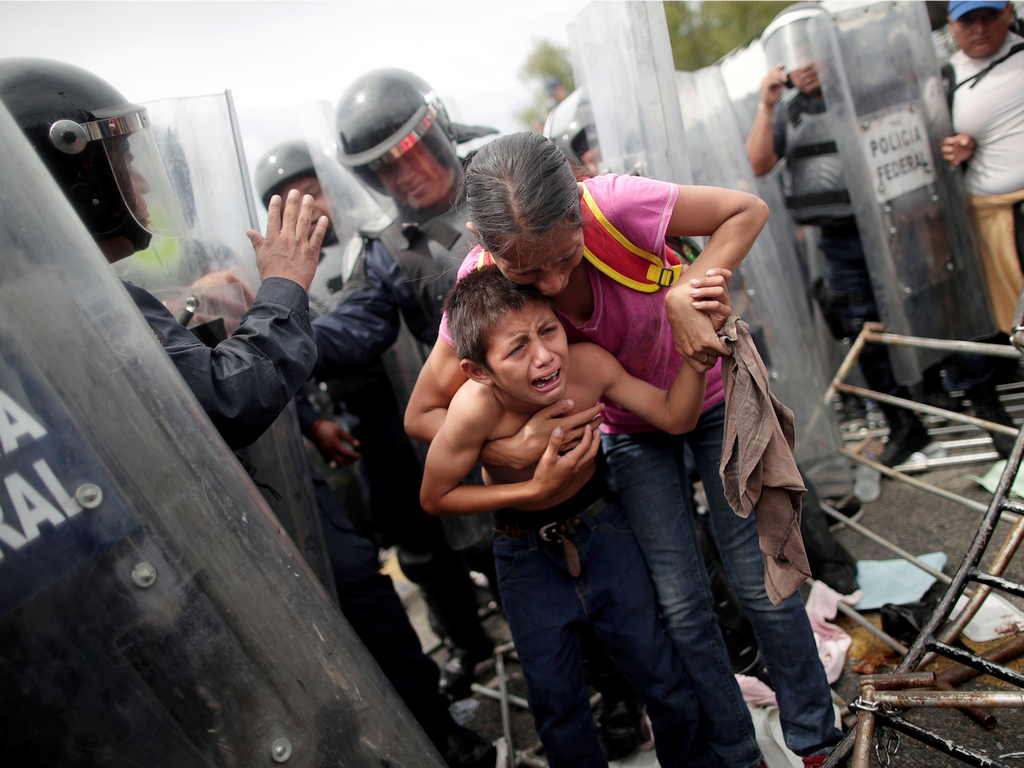
Ueslei Marcelino/Reuters
Source: Reuters
Many of the migrants waited on this bridge for hours.
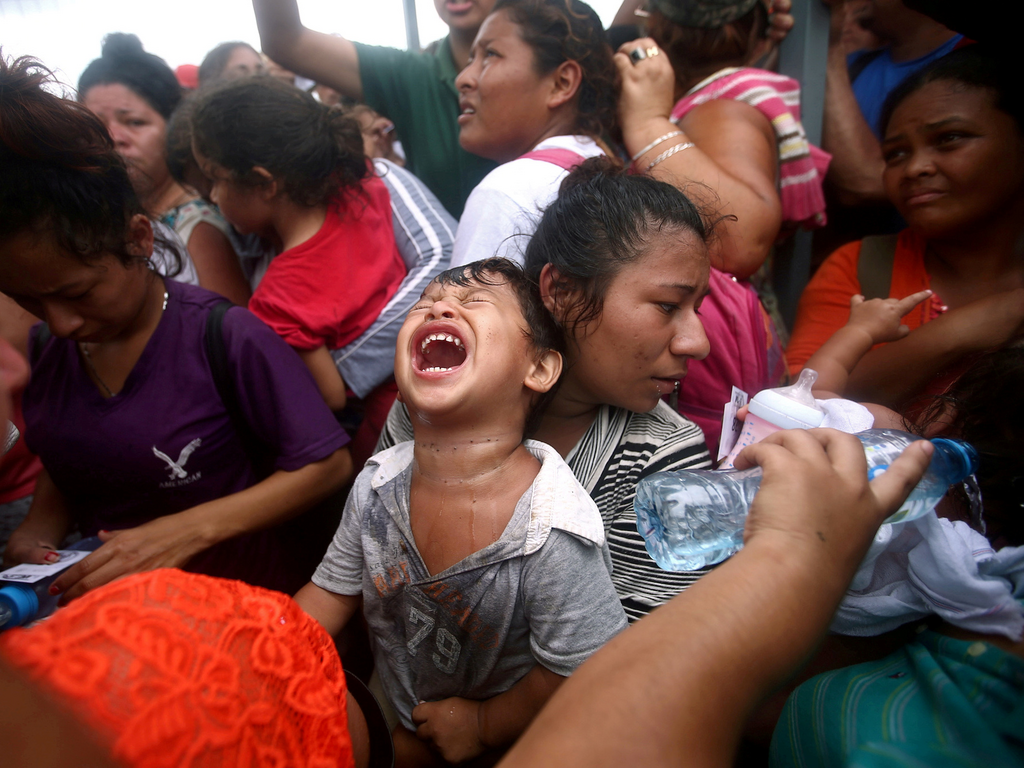
Edgard Garrido/Reuters
Source: Reuters
Some grew impatient — a group of frustrated migrant men tried to tear down the border gate, to no avail.
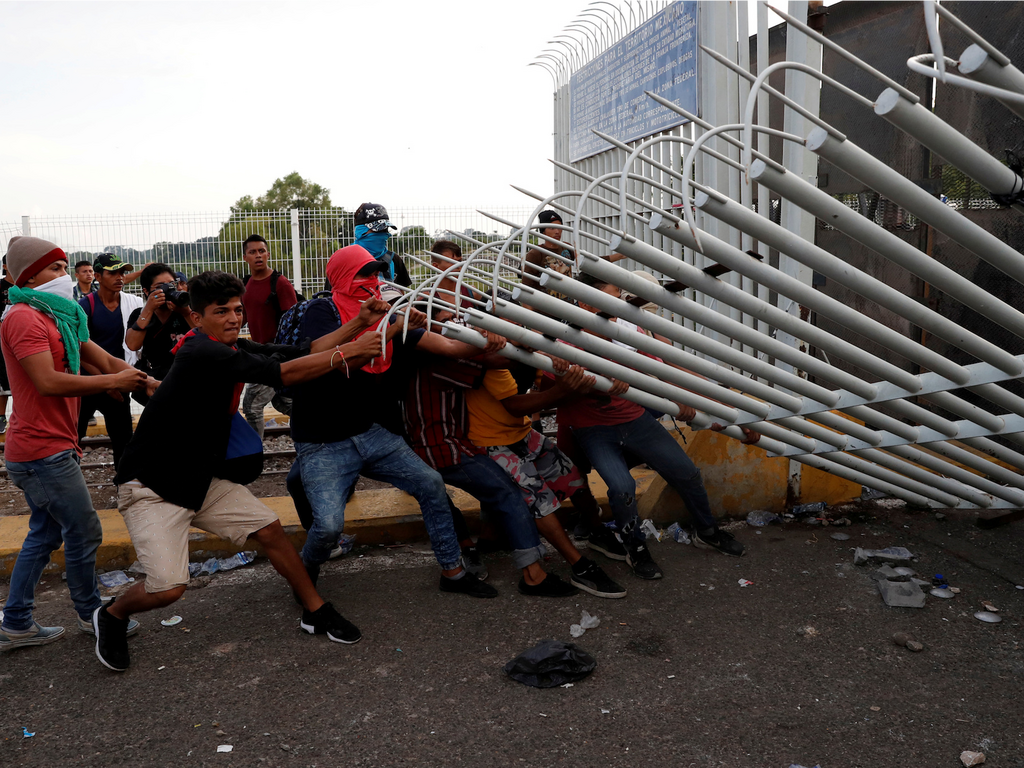
Carlos Garcia Rawlins/Reuters
Source: Reuters
Migrants abandoned the bridge and climbed down into the Suchiate River below.
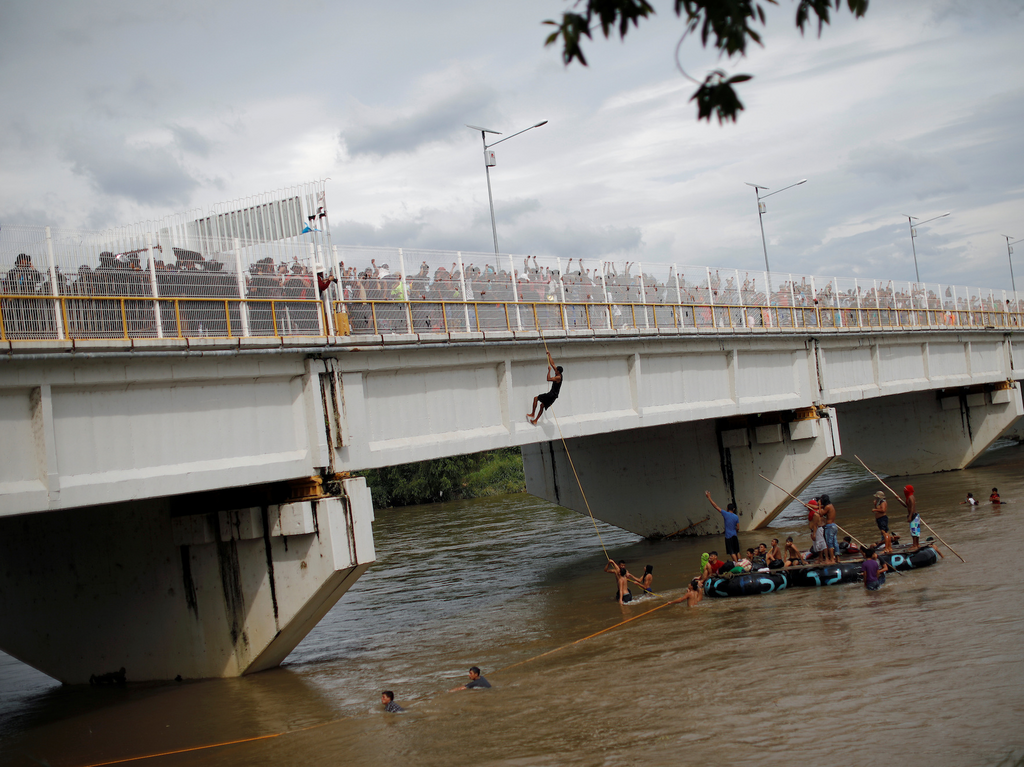
Ueslei Marcelino/Reuters
Source: Reuters
Others who followed ignored the bridge altogether and entered the river immediately to continue on their journey, since the border gates remained closed.
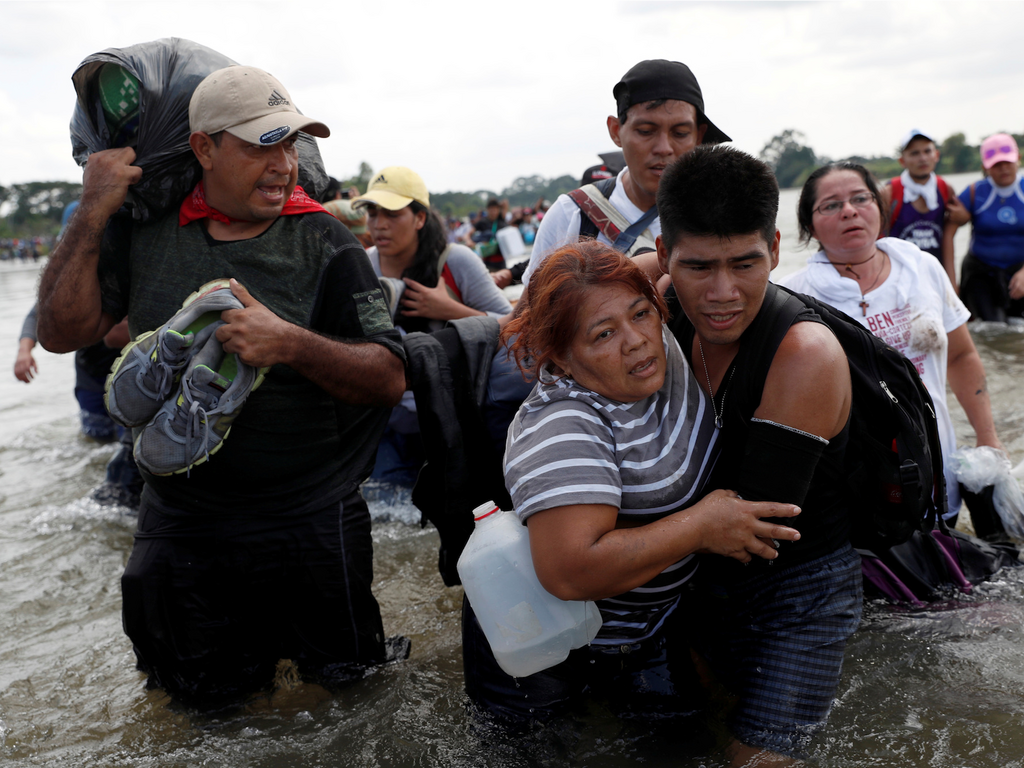
Carlos Garcia Rawlins/Reuters
Source: Reuters
Hondurans Luis Acosta and 5-year-old Angel Jesus were among them.
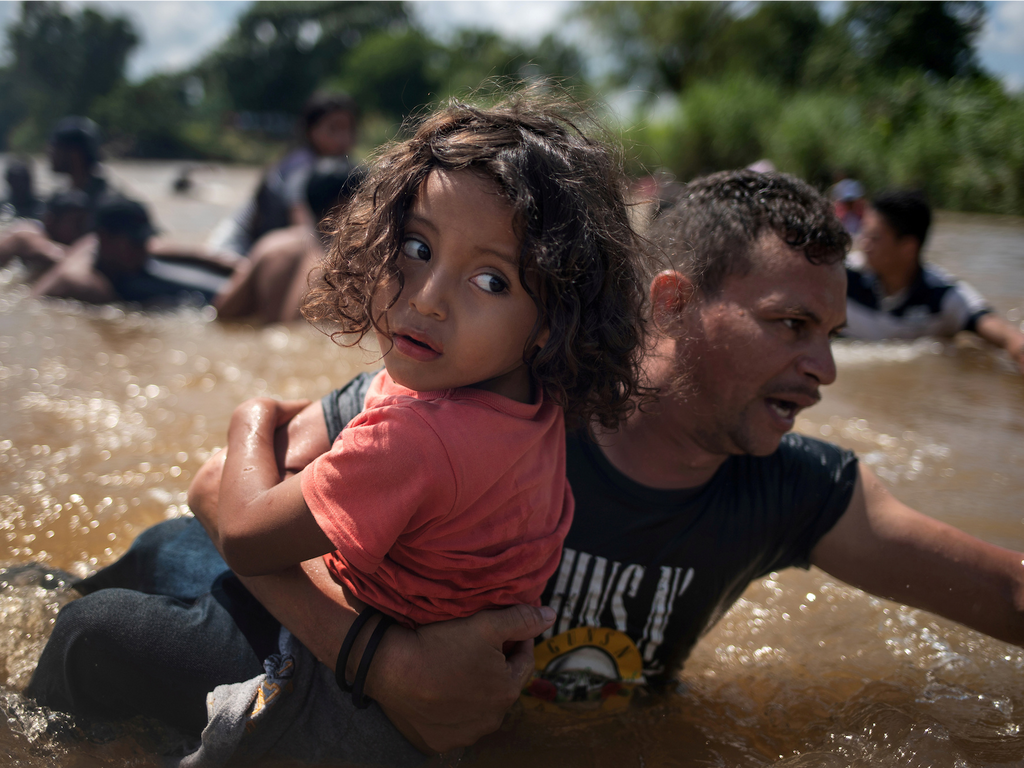
Adrees Latif/Reuters
Source: Reuters
El Salvadoran migrant Daniel and his 1-year-old daughter Daniela did the same.
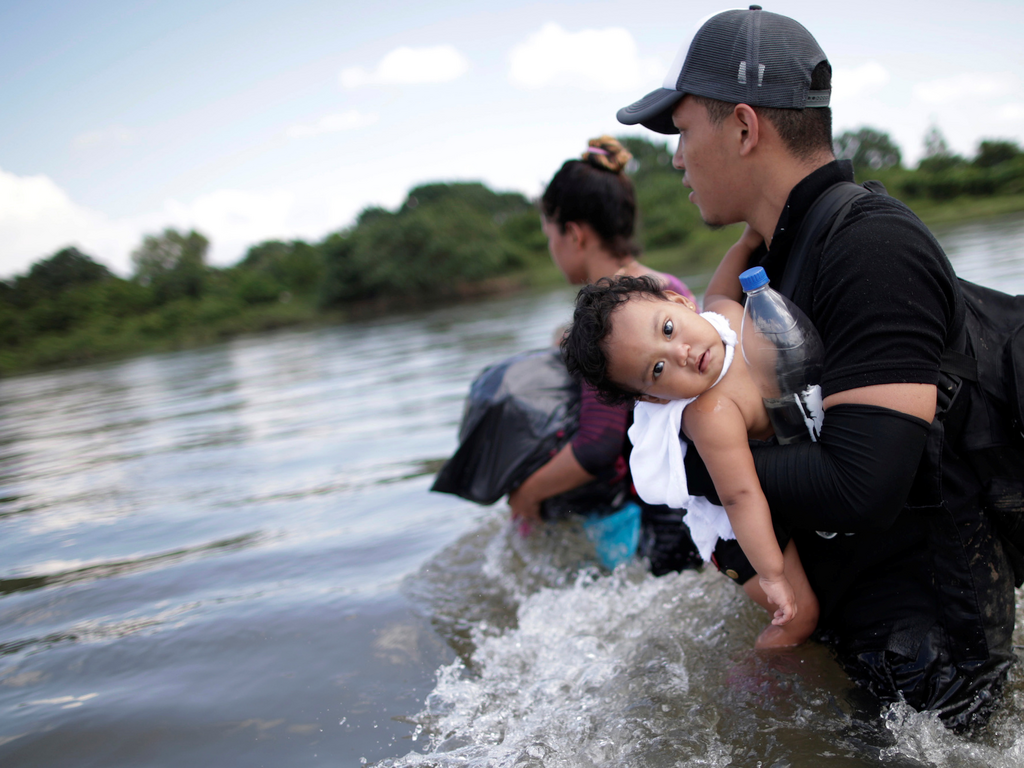
Ueslei Marcelino/Reuters
Source: Reuters
Despite some migrants river crossing, the gate was eventually opened and migrants were allowed to cross into Mexico.
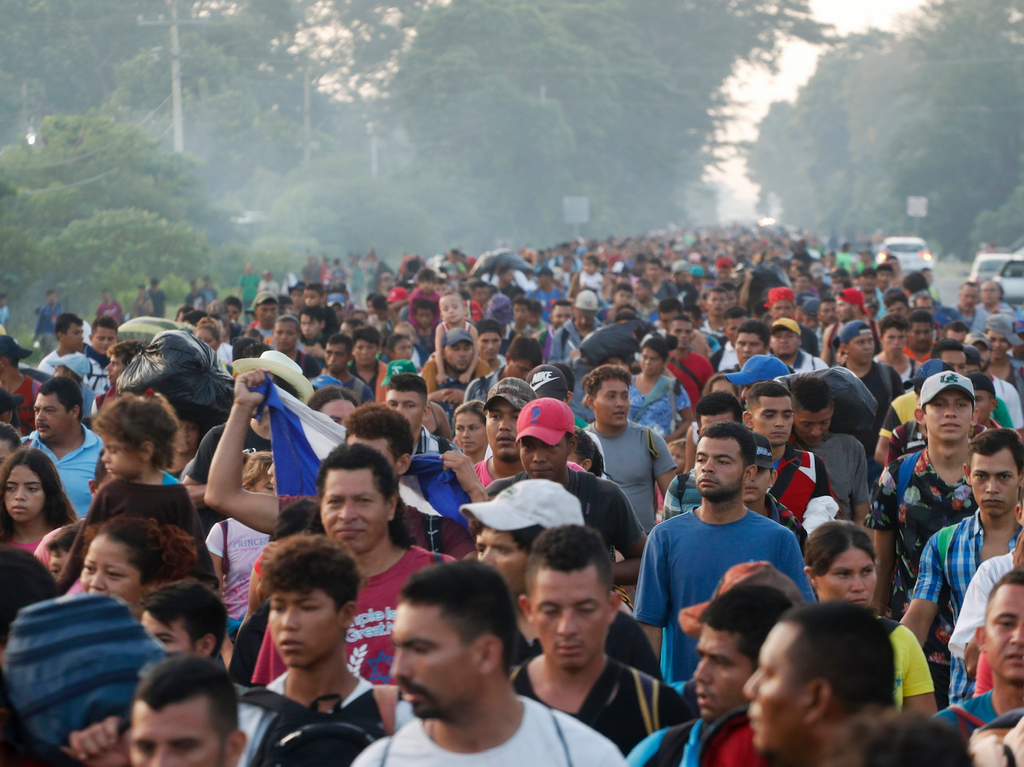
Moises Castillo/AP
Source: Reuters
Shelters, organized by local charities and Good Samaritans, aided the migrants along their trek northward.
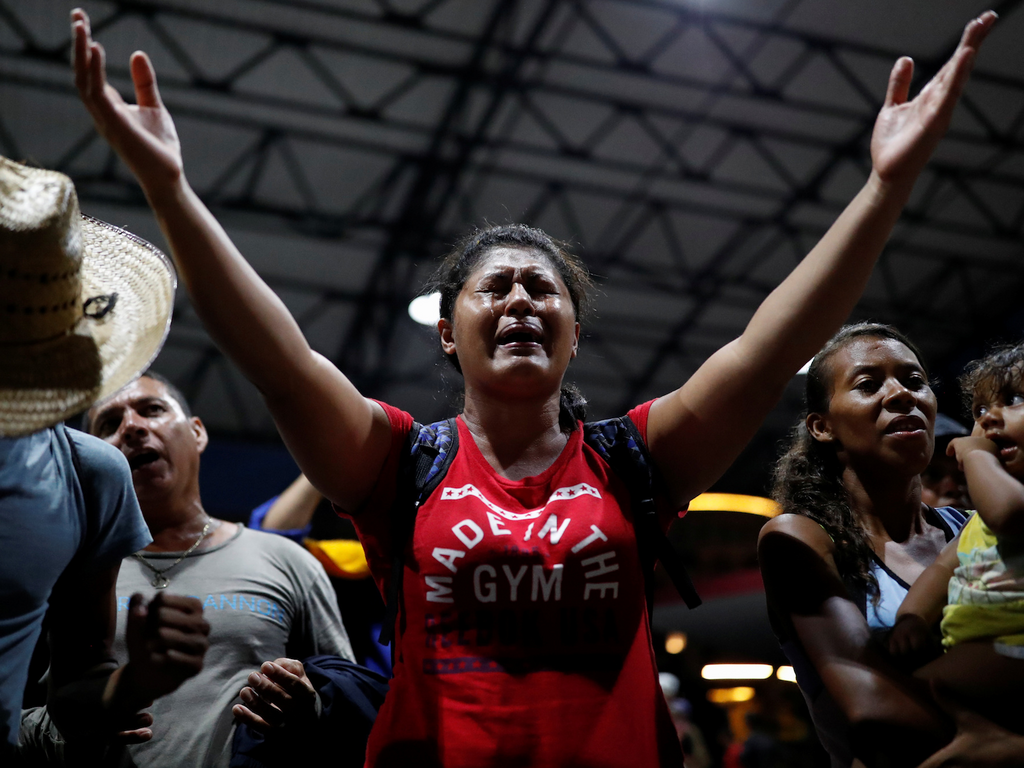
Carlos Garcia Rawlins/Reuters
Source: Reuters
They bathed in fresh water streams when they could, like 55-year-old Anna-Maria Sadillon.
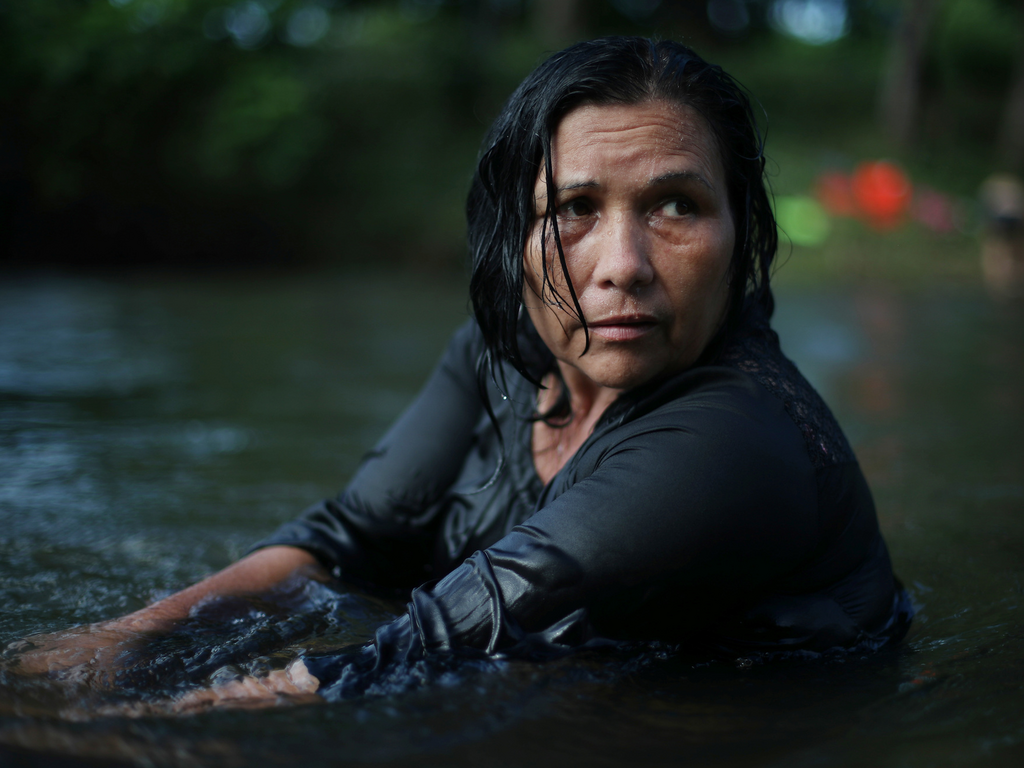
Hannah McKay/Reuters
Source: Reuters
Most awoke in the early hours of the morning to make it to the next town before the weather got too warm.
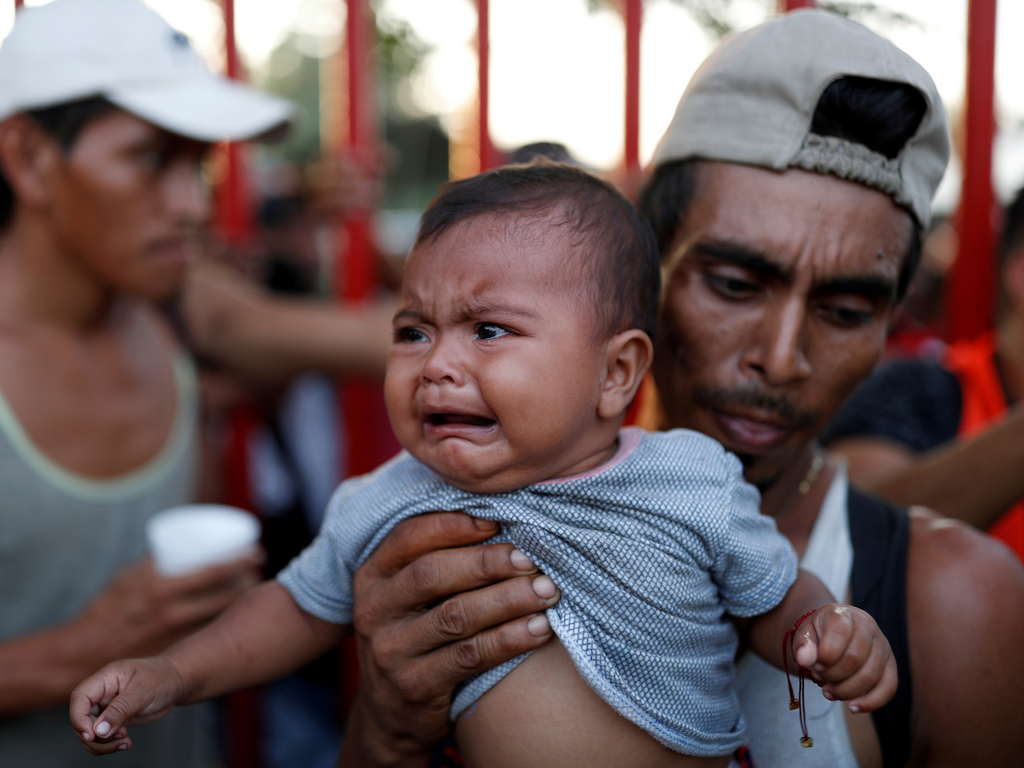
Carlos Garcia Rawlins/Reuters
Source: Reuters
If migrants were lucky, they would hitchhike on passing cars to the next town.
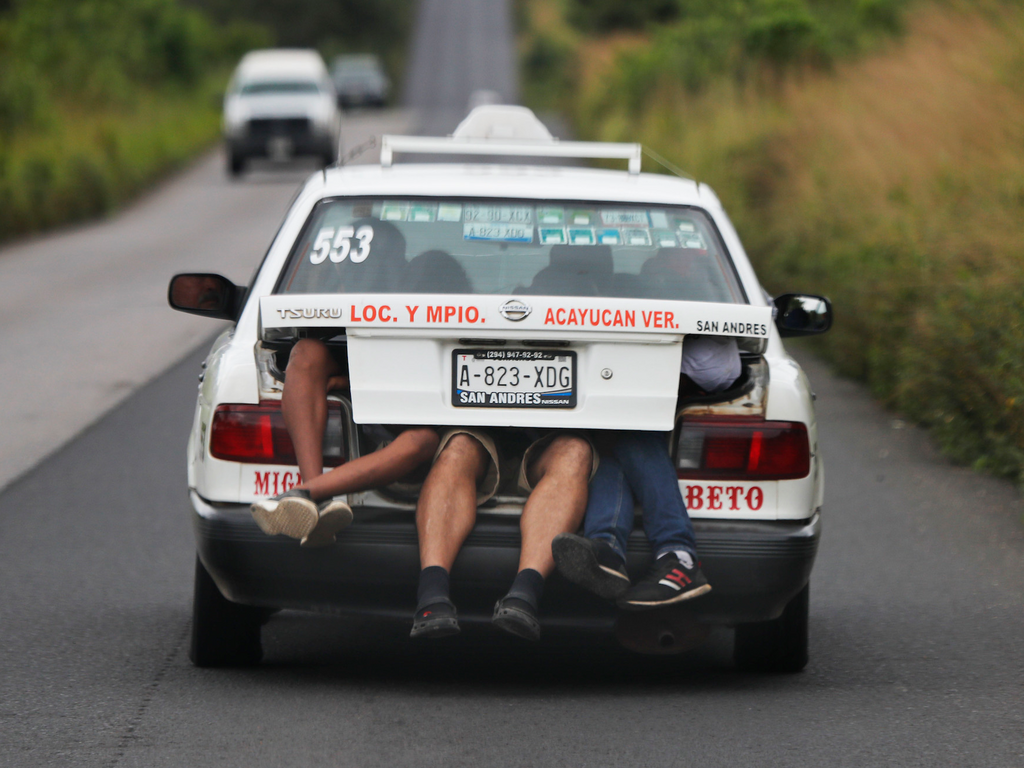
Marco Ugarte/AP
Source: Reuters
Thats not always safe though. Salvador and his family, pictured below, told activist Paola Mendoza that riding on the trucks can be dangerous, but he feels he has no choice. "I couldnt stay in the place where we were living," he said. "Gangs threatened to kill me and my kids. My only option was to go North.”
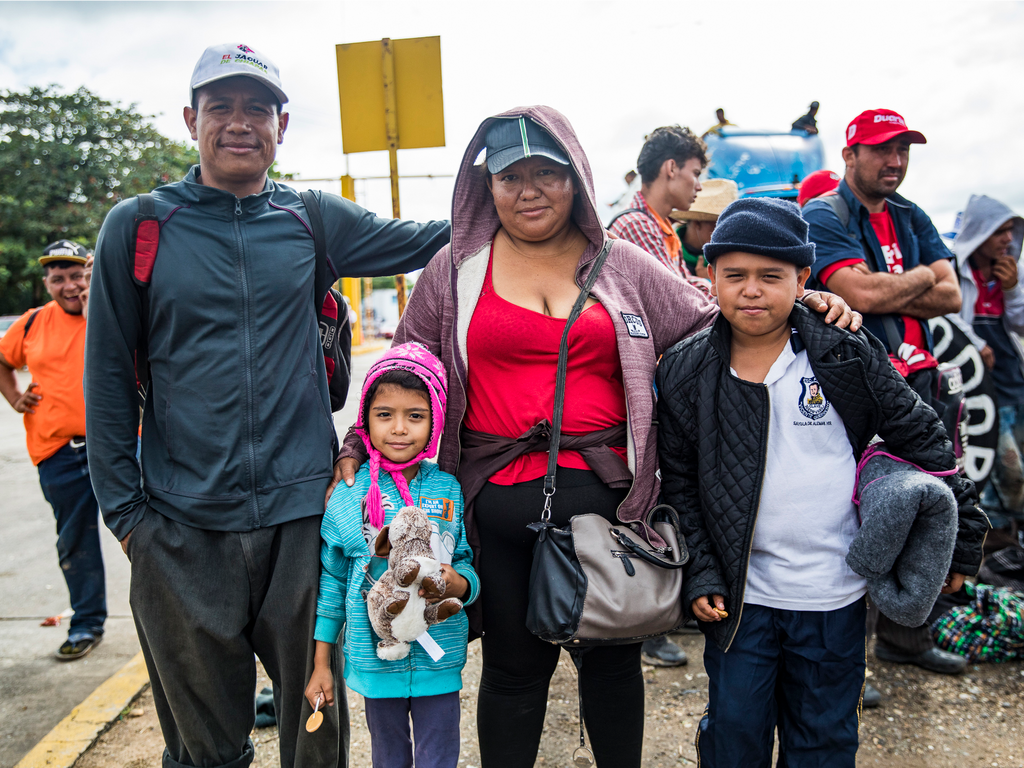
Courtesy of Kisha Bari
Story courtesy of Paola Mendoza and Kisha Bari for FamiliesBelongTogether.org .
Migrants and their children, like 7-year-old twins Justin Mauricio and Justin Duan, would rest on the side of the road when they grew tired.
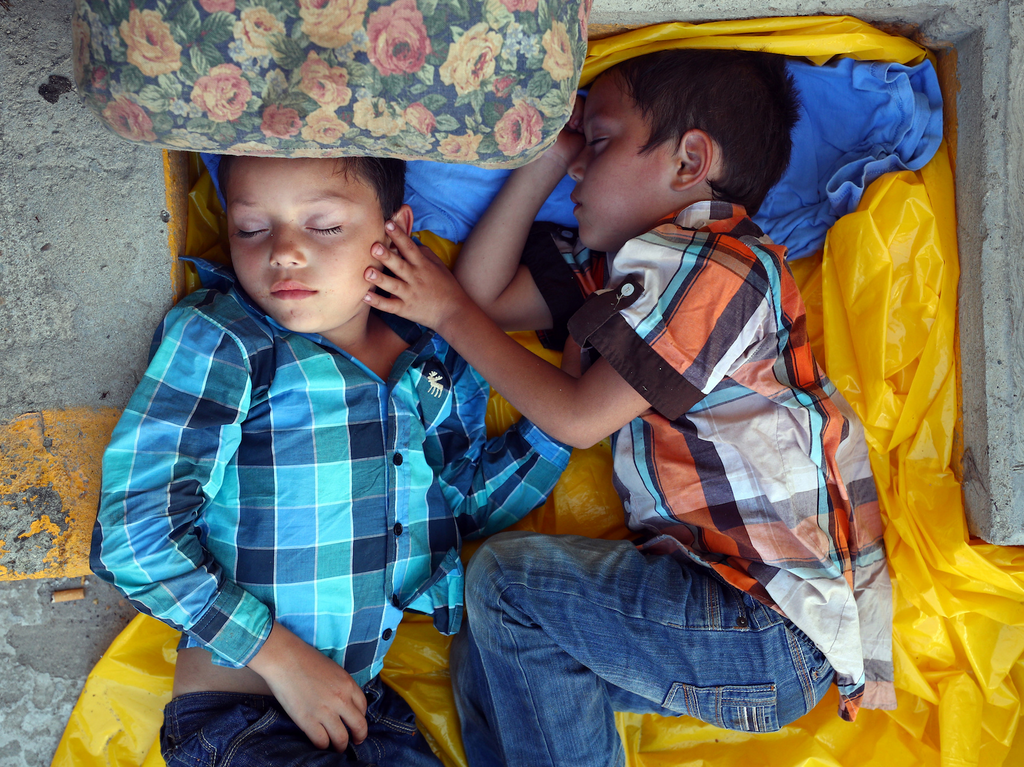
Hannah McKay/Reuters
They would lay their heads and rest wherever they safely could.
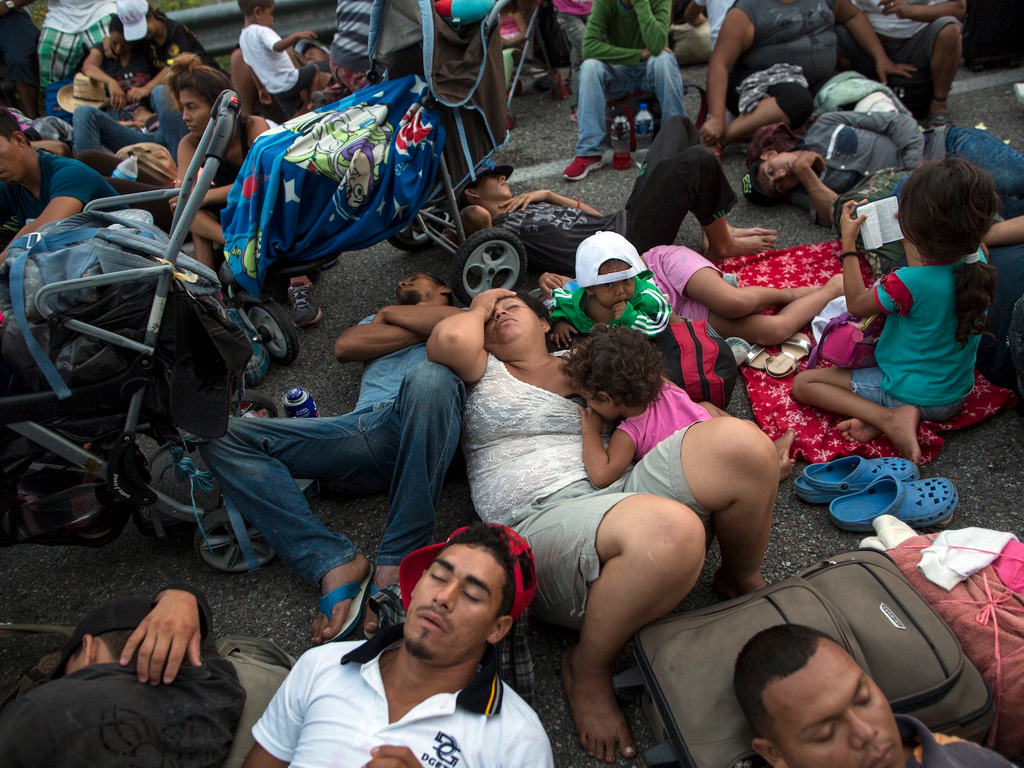
Rodrigo Abd/AP
Source: Associated Press
Julio, aged 43, and pictured here with his one-year-old son Eddie, said they left their home in Guatemala to join the caravan of people after his wifes death five months ago. He said he feels he will have a better life in the US.
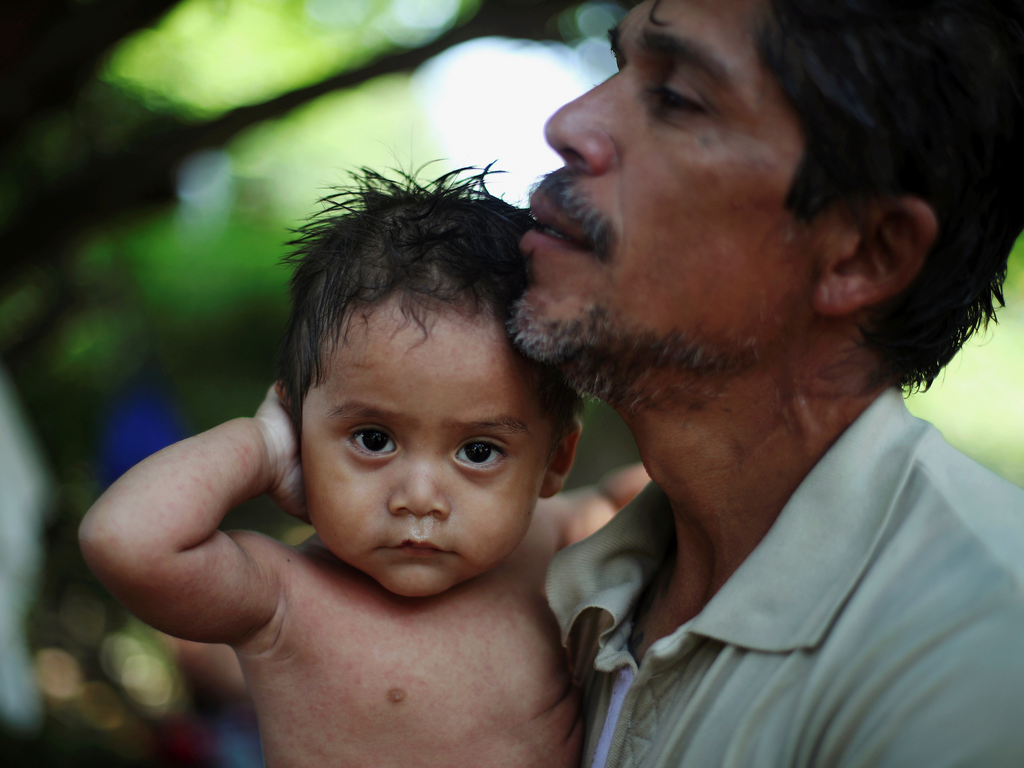
Hannah McKay/Reuters
Source: Reuters
Another migrant, Nubia and her two children, told Mendoza that her neighborhood back home was violent, and shes traveling to the US so that her kids will have a better future.
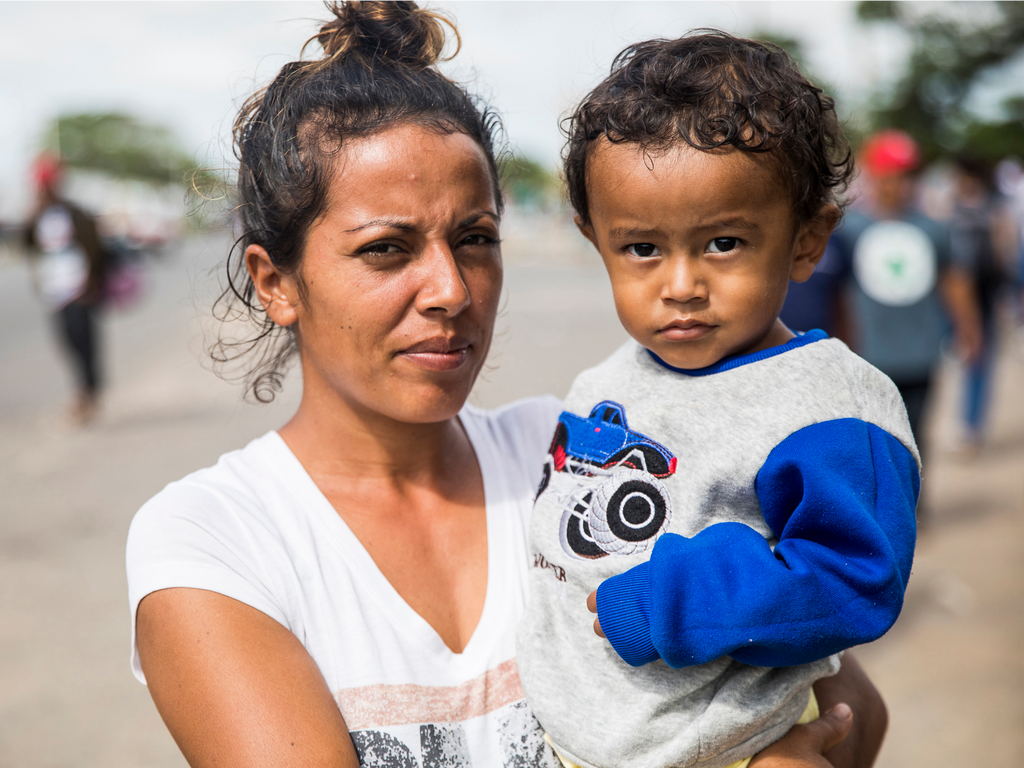
Courtesy of Kisha Bari
Story courtesy of Paola Mendoza and Kisha Bari for FamiliesBelongTogether.org .
Honduran migrant Glenda Escobar told Reuters that shes headed toward Los Angeles. "Its because, in my dreams, God told me thats where hes sending me," Escobar said.
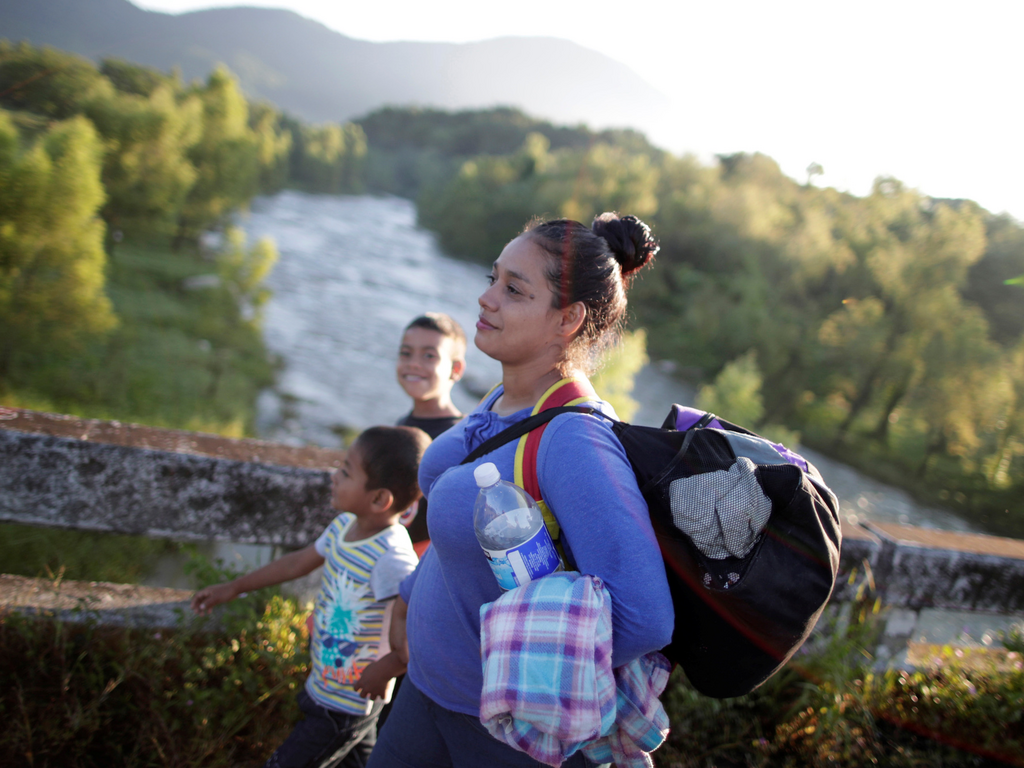
Ueslei Marcelino/Reuters
Source: Reuters
Escobar and her two sons, 5-year-old Adonai and 8-year-old Denzel, joined the caravan on October 14 with only a plastic tarp, clothes, and soap.
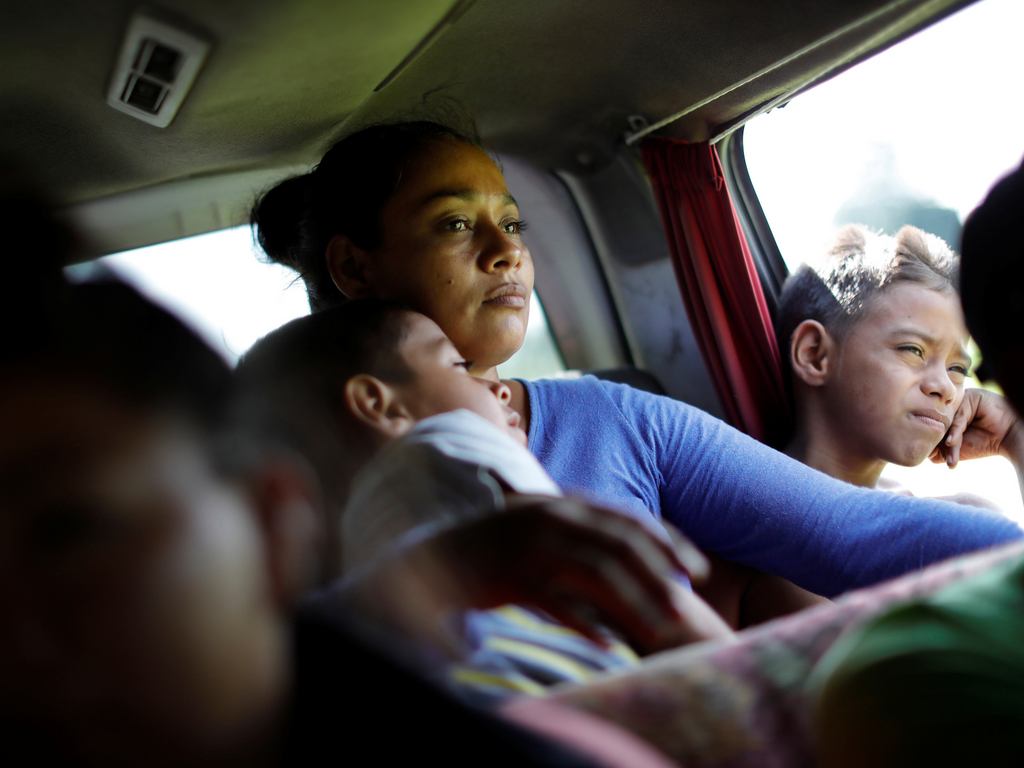
Ueslei Marcelino/Reuters
Source: Reuters
The man who fathered Denzel and Adonai was abusive and forced her from her own home in Honduras, Escobar said. She said she packed fast when a neighbor informed her of the caravan traveling northward.
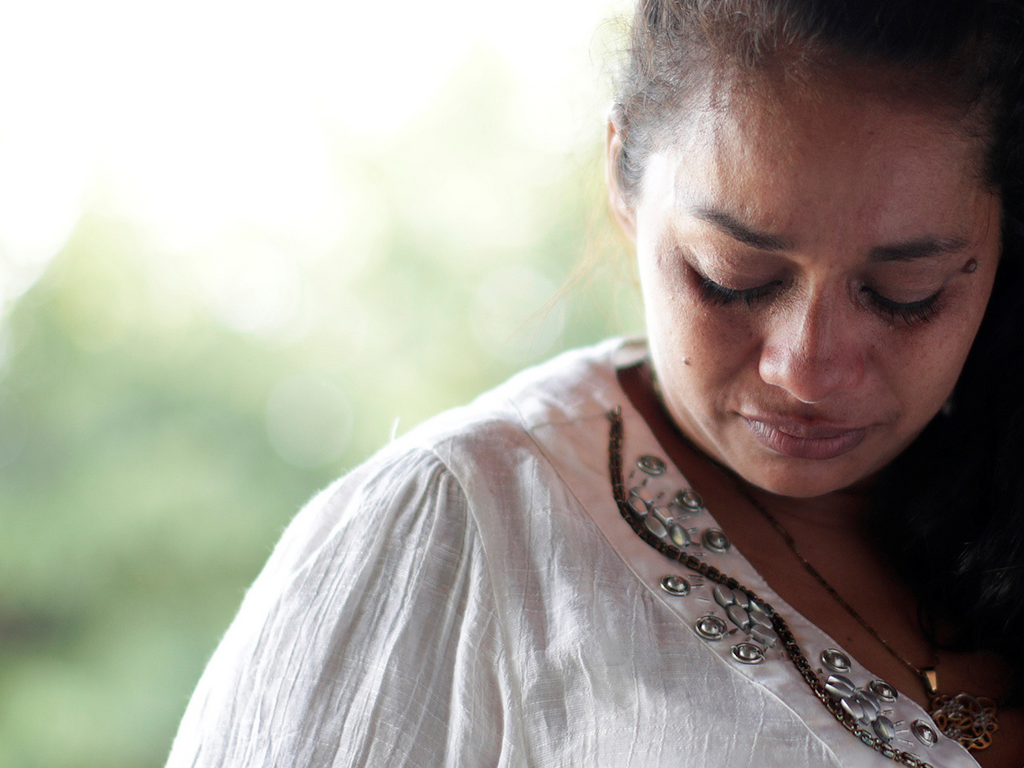
Ueslei Marcelino/Reuters
Source: Reuters
She left her oldest two children with family with plans to retrieve them at a later time.
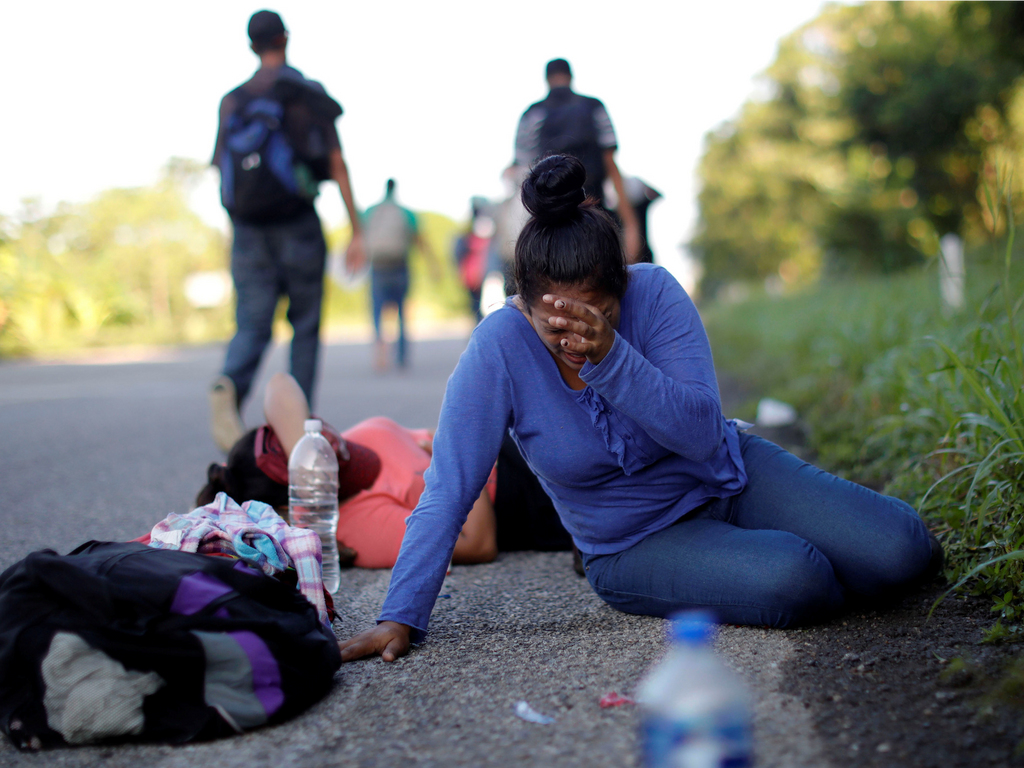
Ueslei Marcelino/Reuters
Source: Reuters
Theyve covered about 30 miles a day with the caravan bound for the US, resting on the side of the road periodically.
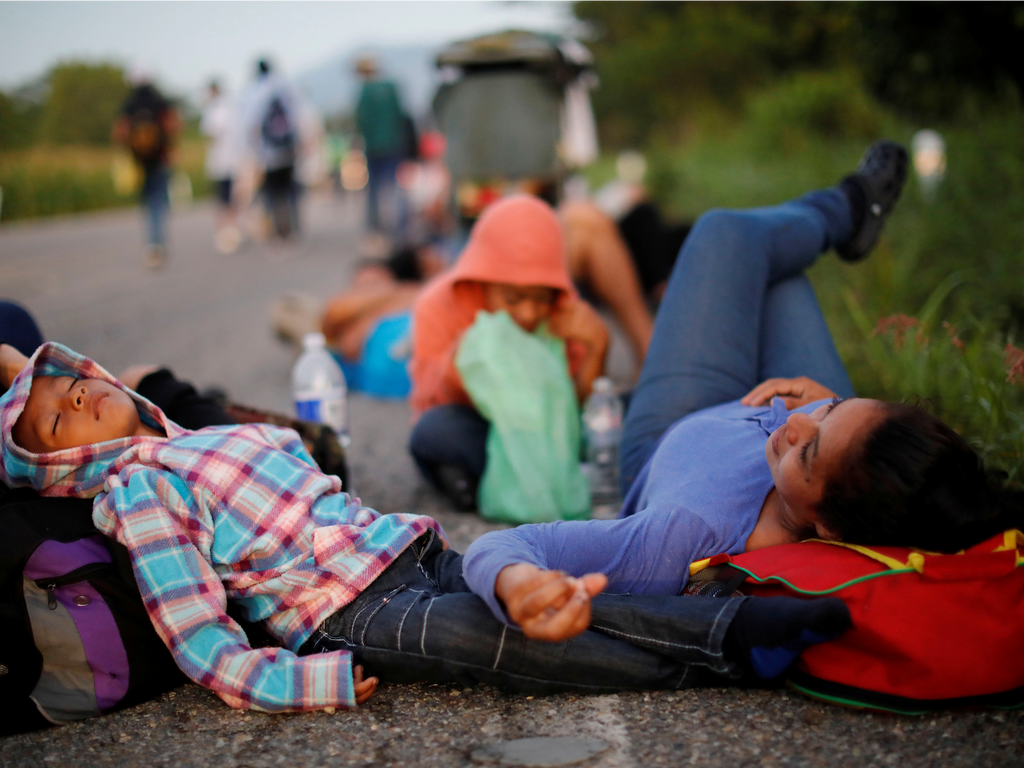
Ueslei Marcelino/Reuters
Source: Reuters
Other times, they stay in the local shelters that organizers have provided for the migrants.
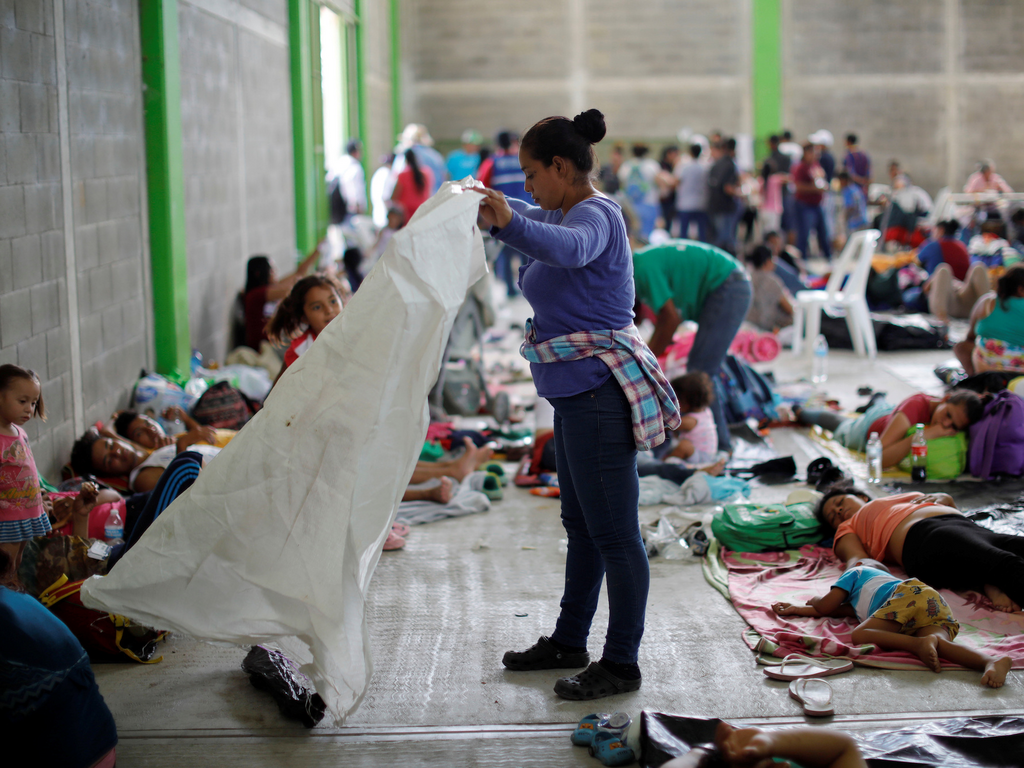
Ueslei Marcelino/Reuters
Source: Reuters
In an effort to break up the caravans, Mexico has offered the travelers temporary jobs and identification papers if they claim asylum there.
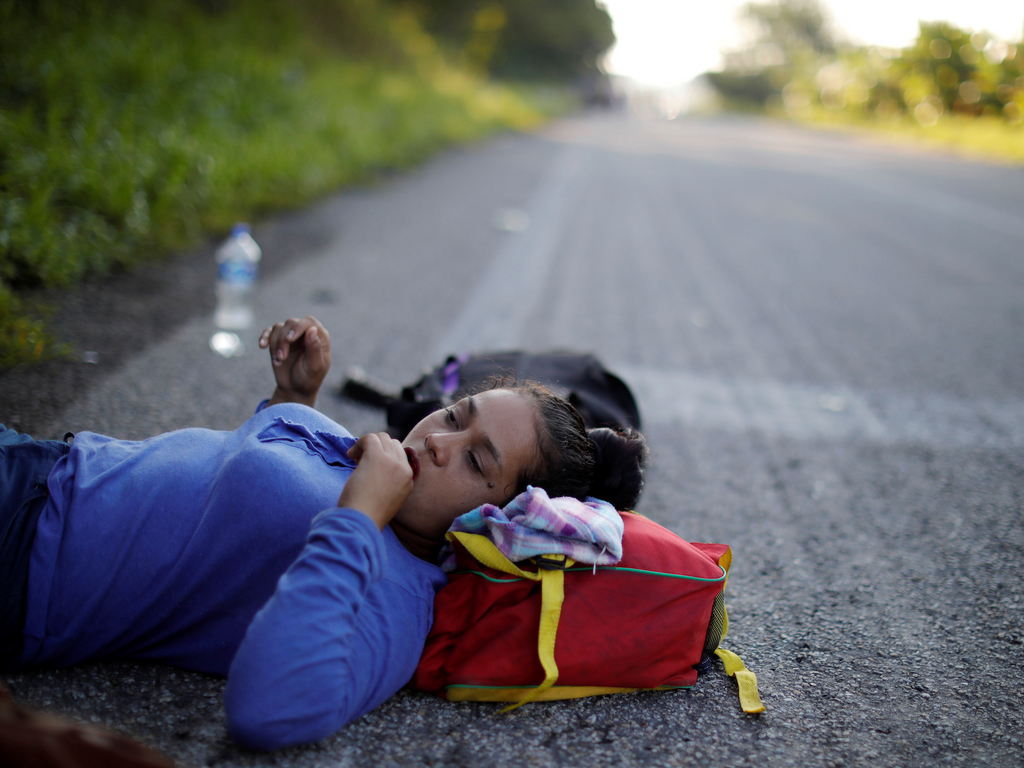
Ueslei Marcelino/Reuters
Source: Reuters
But many, including Escobar, have rejected the proposal. "The United States is better," she said. "For everything."
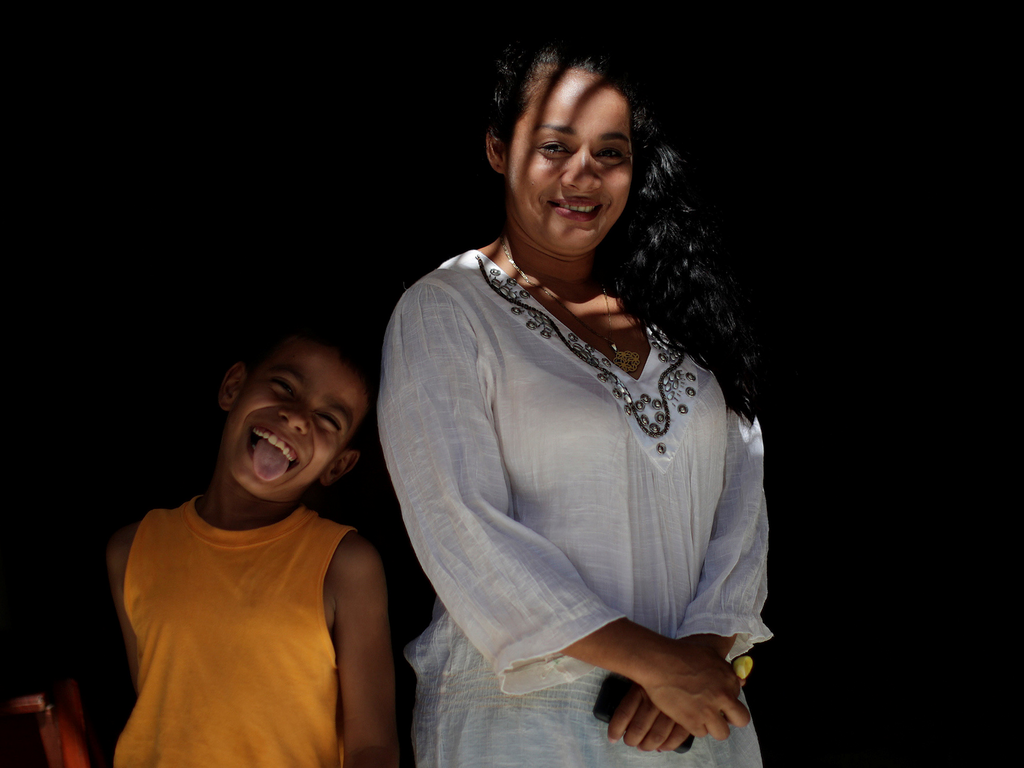
Ueslei Marcelino/Reuters
Source: Reuters
Oscar Martinez, a 37-year-old migrant from Honduras, echoed that sentiment. "We are going to US looking for a better future for our children," Martinez told Reuters. He and his entire family, including his wife and 3-year-old son Dilan, are walking with the caravan toward the US border.
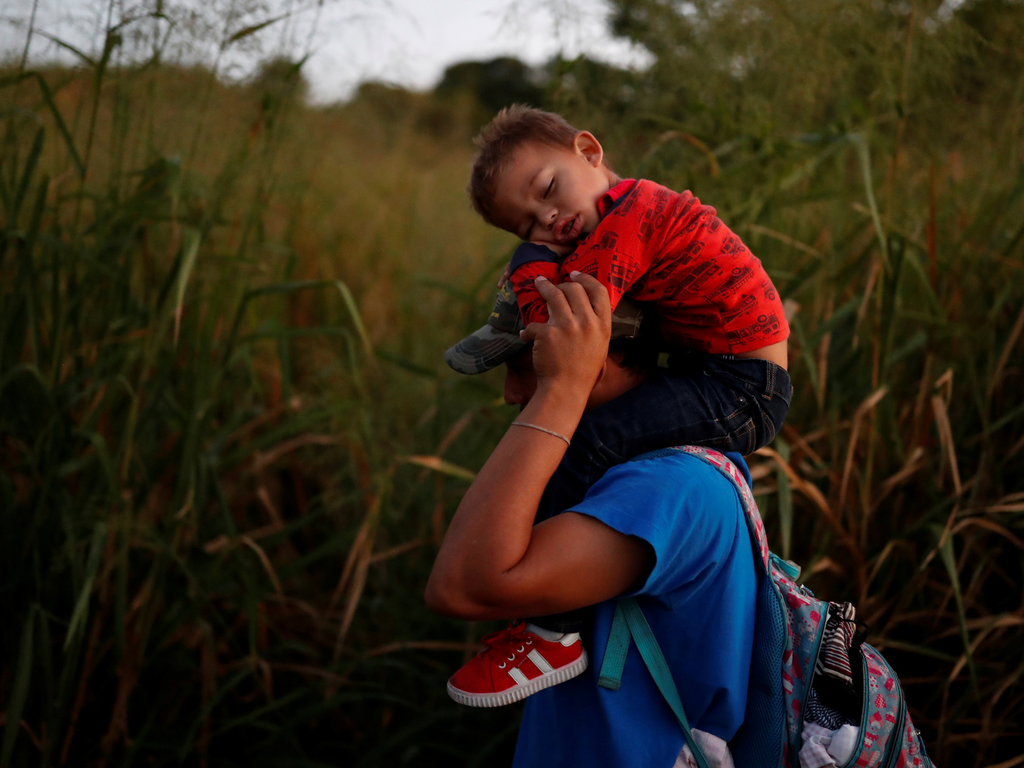
Carlos Garcia Rawlins/Reuters
On November 14, the first wave of migrants reached Tijuana, Mexico, near the US port of entry in San Ysidro. Thousands more followed in the days after, reaching a total of about 5,000, a drop from the original group that set off a month earlier.
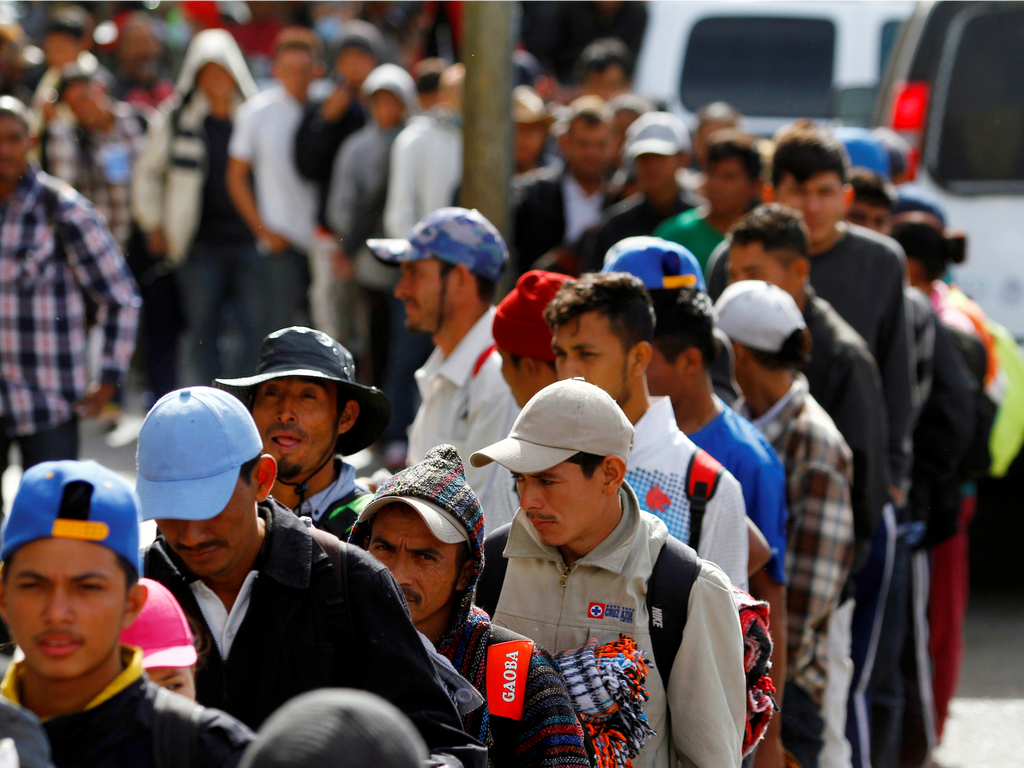
Jorge Duenes/Reuters
Source: BBC and Business Insider
US President Donald Trump had ordered 5,000 troops to the border to aid border-patrol agents already stationed there to prepare for the incoming caravan. Trump has also attempted to bar the migrants from entering and claiming asylum in the US, a move that a federal judge has dubbed unconstitutional.

Win McNamee/Getty Images
Source: Business Insider and Associated Press
US Customs and Border Protection had also installed heavier razor-wire fencing along the border ahead of the caravans arrival.
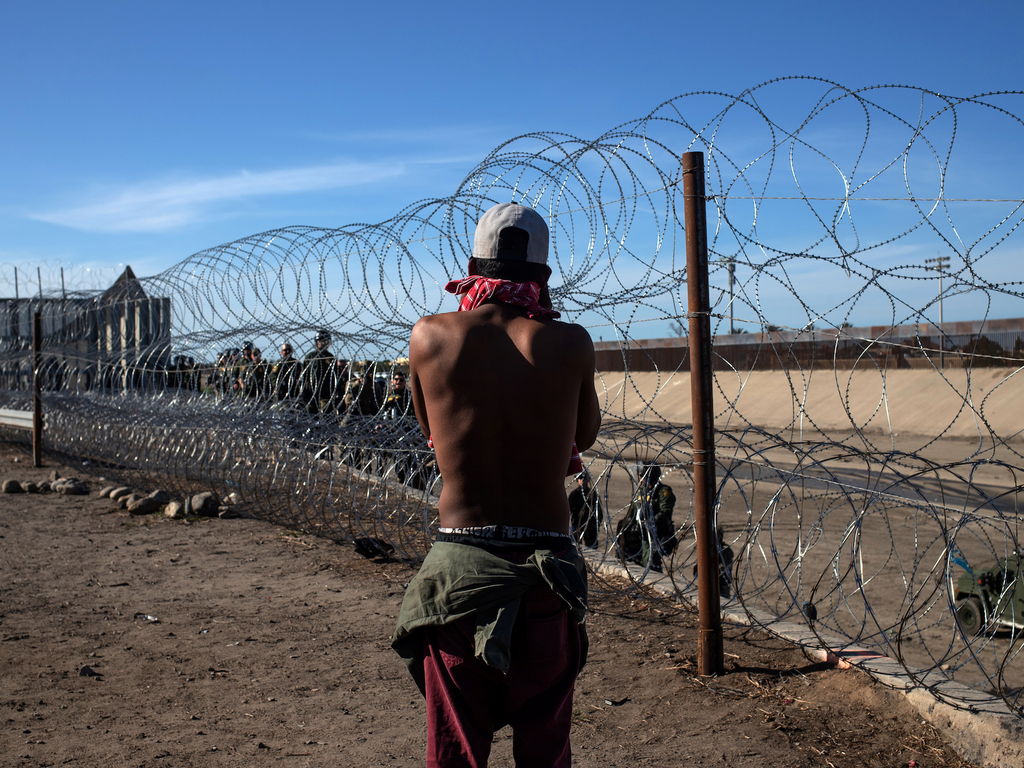
Adrees Latif/Reuters
Source: Reuters
With border patrol barring the migrants from crossing through outside the ports of entry, a makeshift shelter sprouted up in Tijuana for the thousands of asylum-seekers.
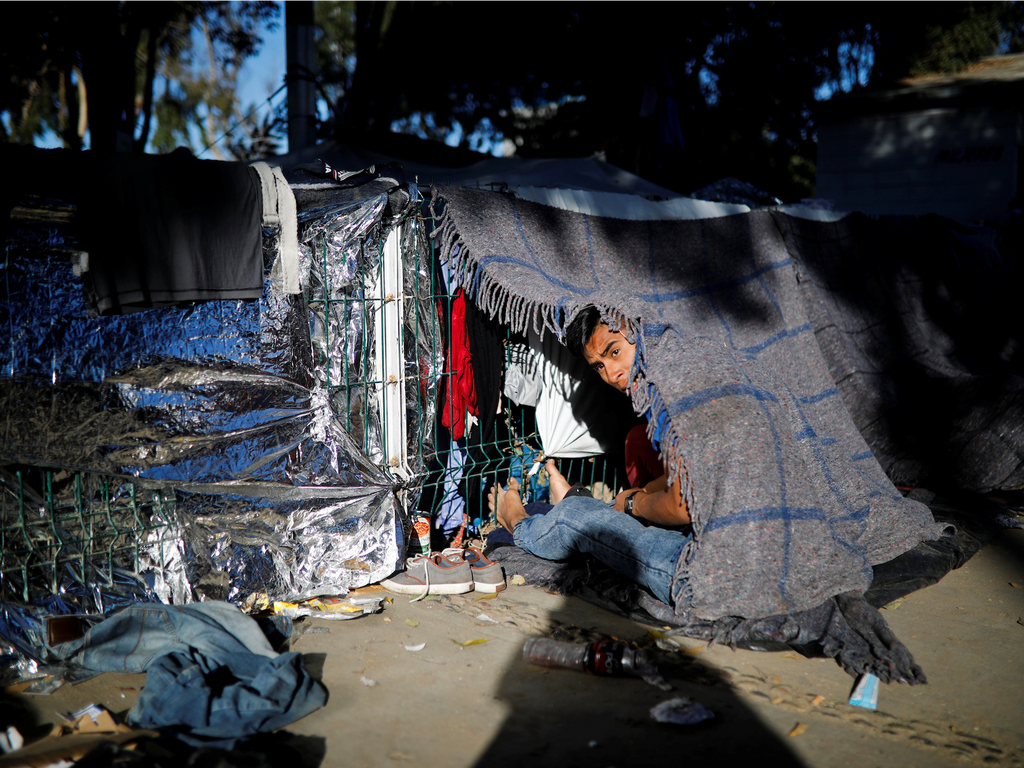
Alkis Konstantinidis/Reuters
Source: Business Insider
Migrants have been camping there while hoping for the border to be opened.
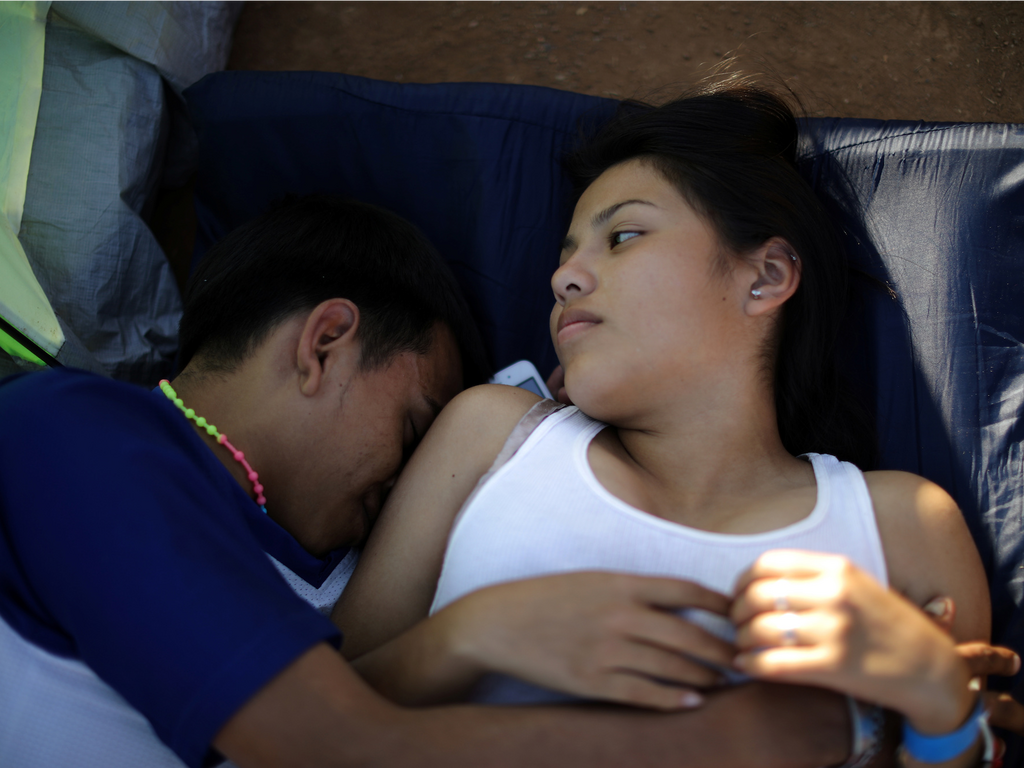
Lucy Nicholson/Reuters
Source: Business Insider
A portion of the migrants, frustrated with the delay and the shelters poor conditions, eventually marched toward the border fence separating the US and Mexico on November 25.
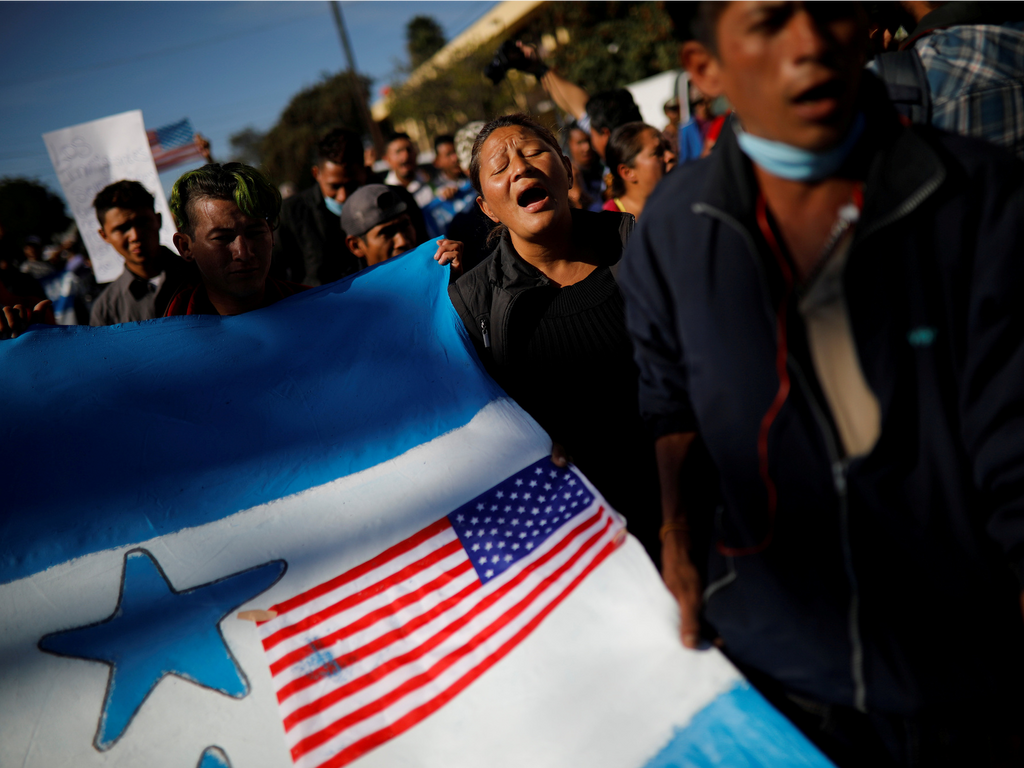
Alkis Konstantinidis/Reuters
Source: Business Insider
Police began to surround them.
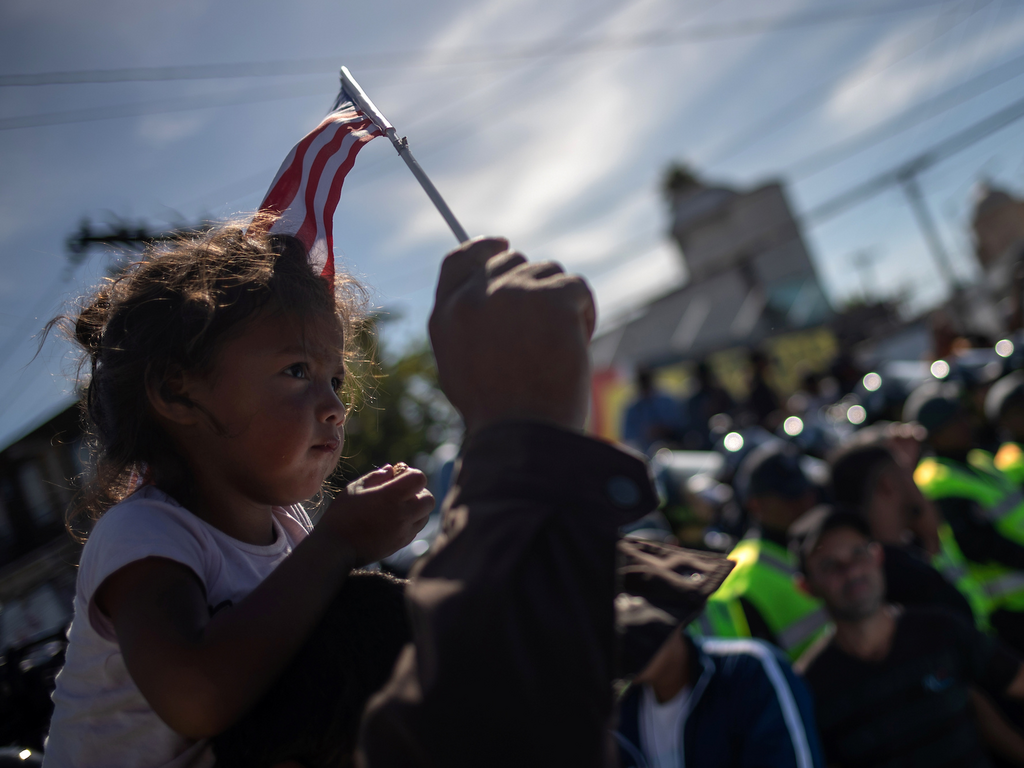
Adrees Latif/Reuters
Source: Reuters
And border-patrol agents prevented them from passing through.
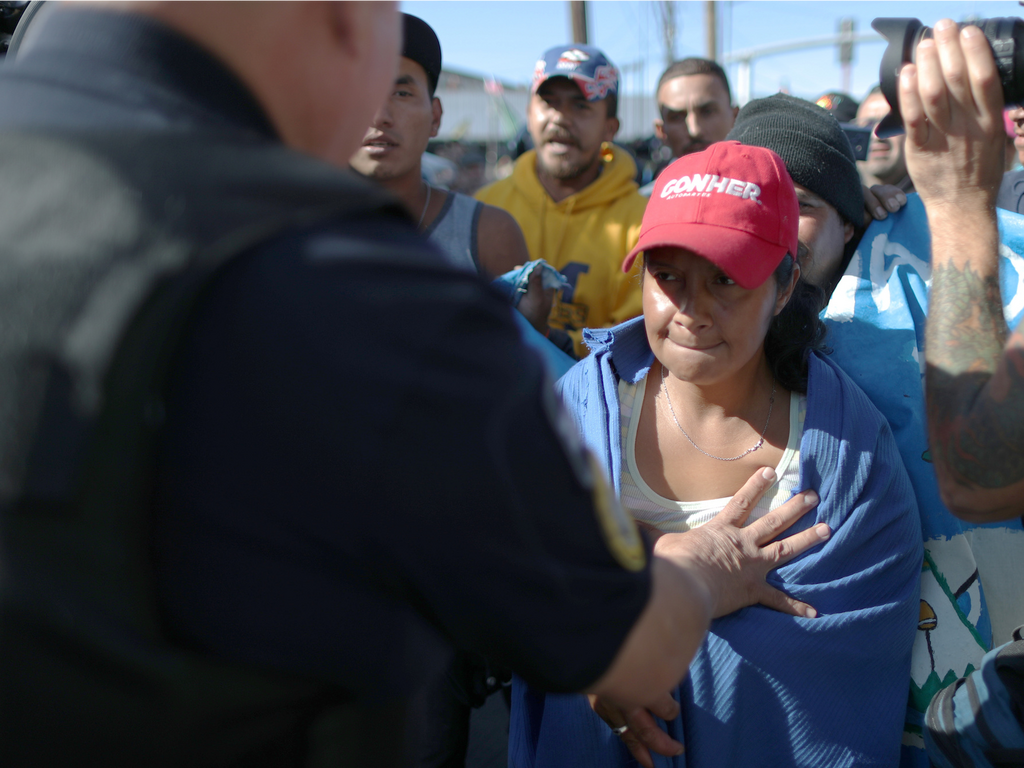
Lucy Nicholson/Reuters
Source: Reuters
Honduran migrant Rosa Villa and her five-month-old son Esteban were also pushed back from the border by Mexican police.
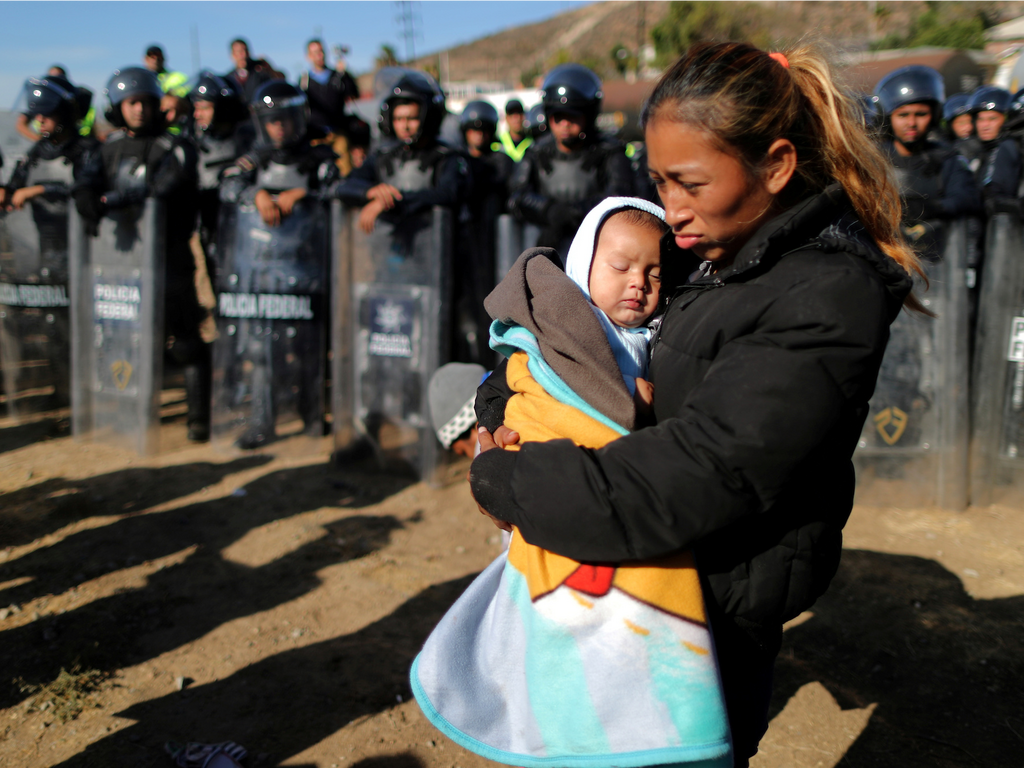
Lucy Nicholson/Reuters
Source: Reuters
Those who attempted to break through were apprehended.
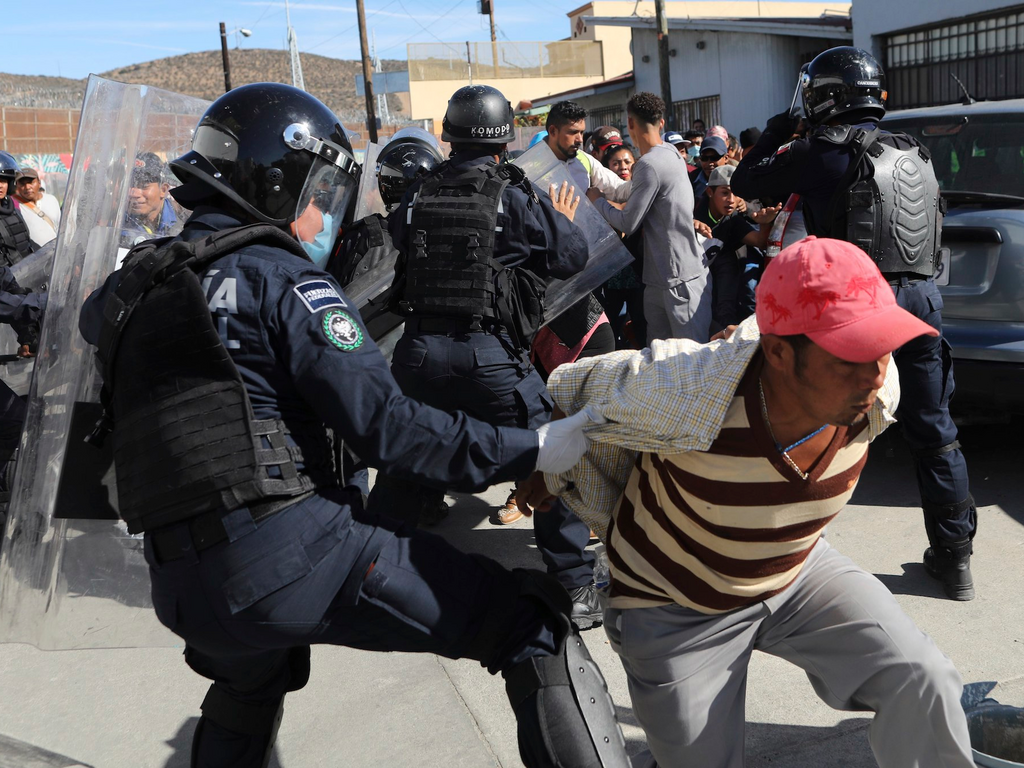
Rodrigo Abd/AP
So some scaled the border fence.
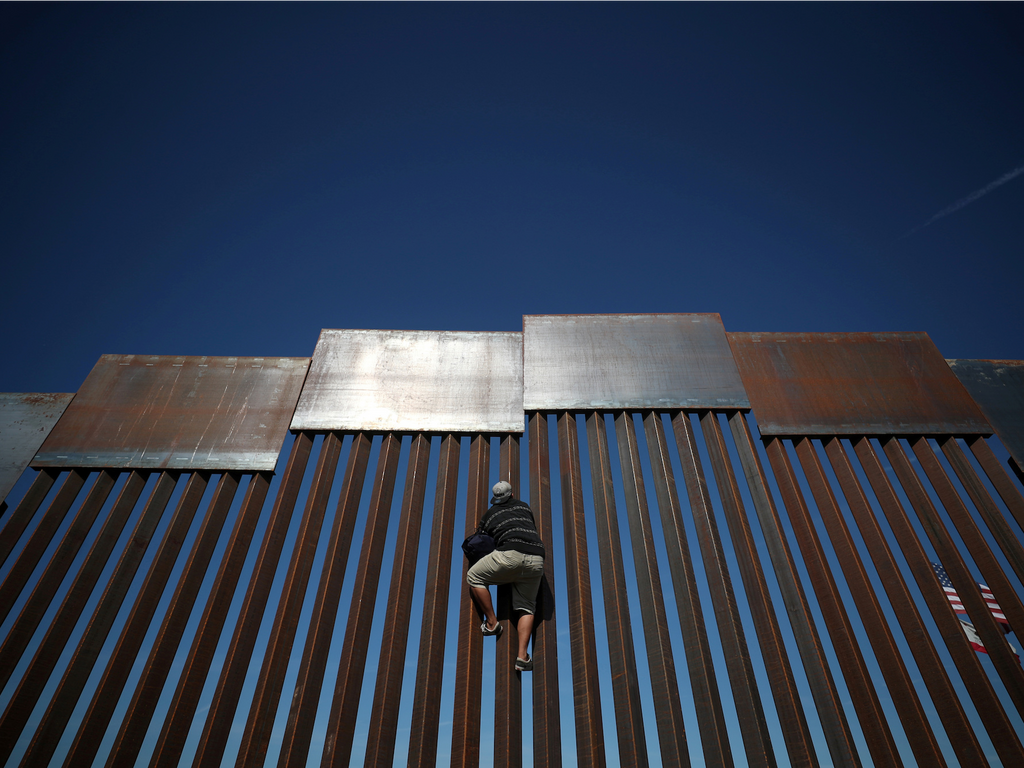
Hannah McKay/Reuters
Even so, those who did get over the fence were detained by border patrol officers on the American side.
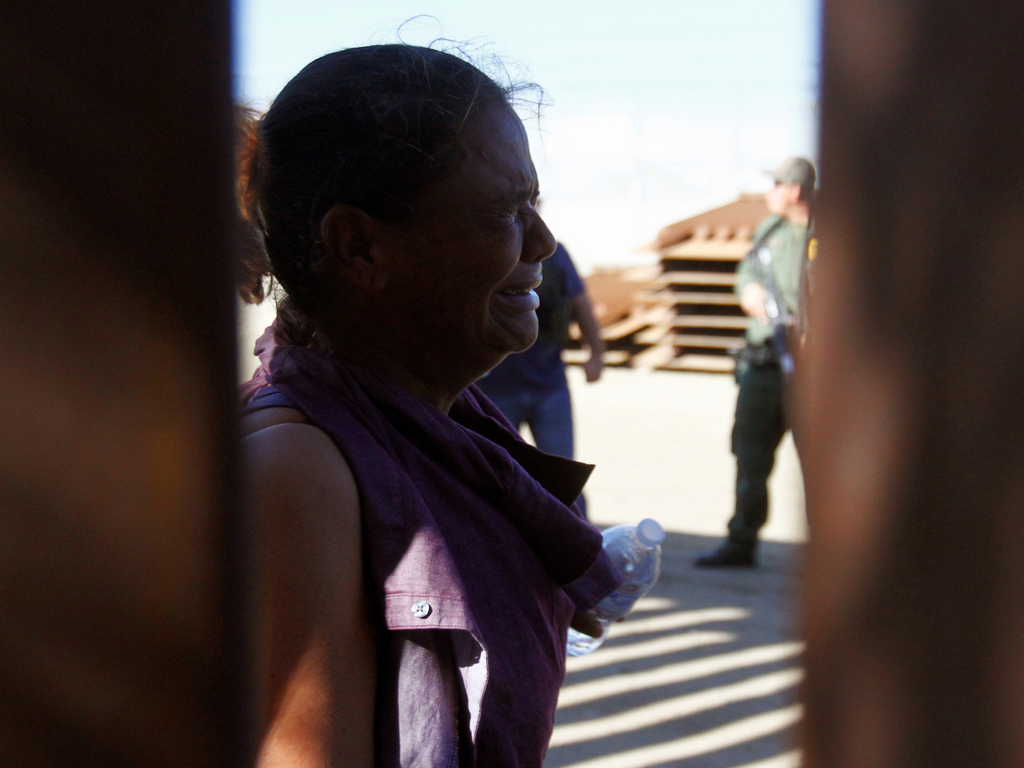
Jorge Duenes/Reuters
At one point, US border patrol agents fired tear gas canisters at the migrants who stormed the border fence after claiming that members of the caravan were throwing things at the officers.
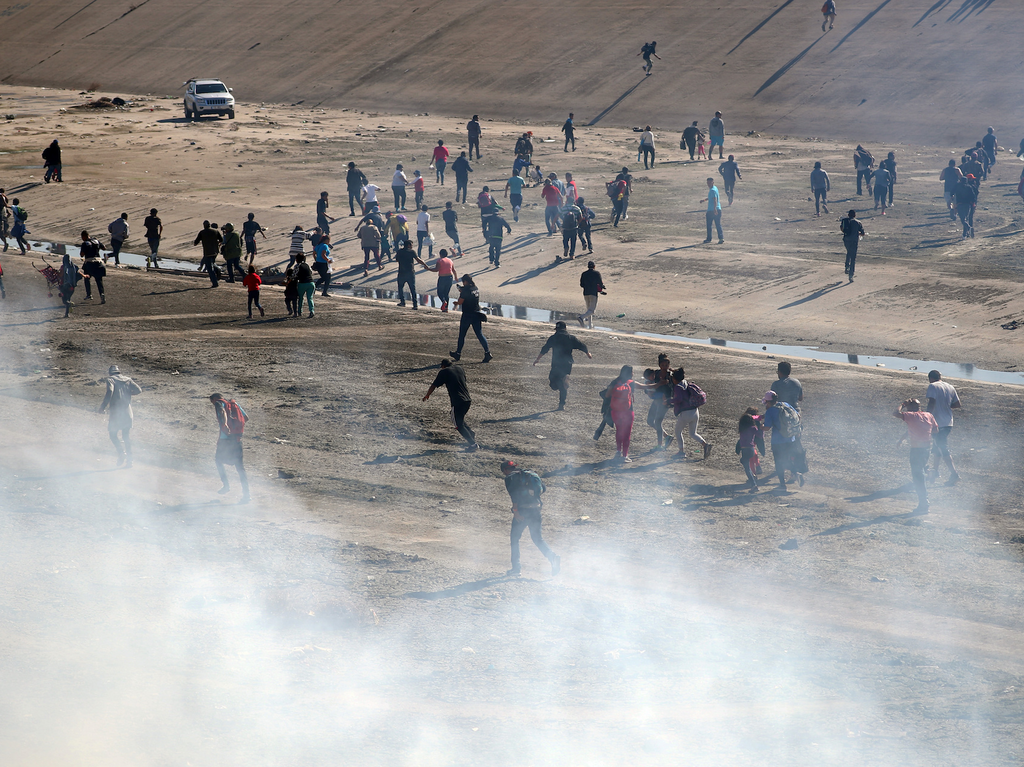
Hannah McKay/Reuters
Source: Business Insider
Migrants retreated back through the border into Mexico to avoid the airborne chemicals.
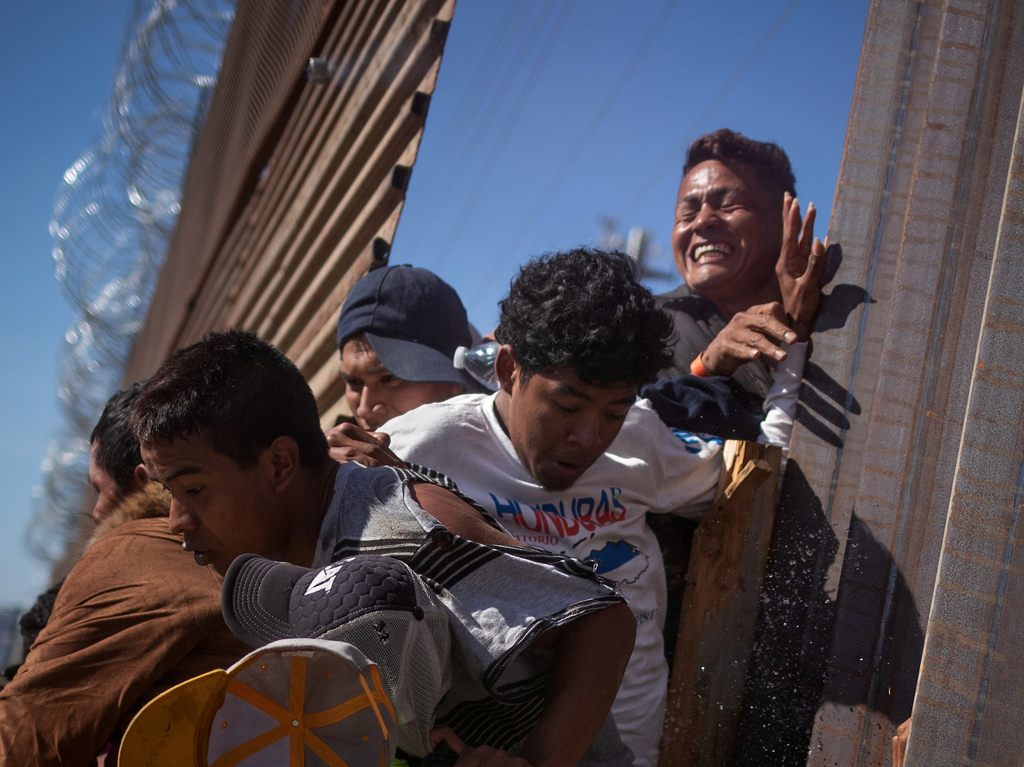
Adrees Latif/Reuters
Source: Business Insider
Some migrants shielded their eyes from the sting of the tear gas.
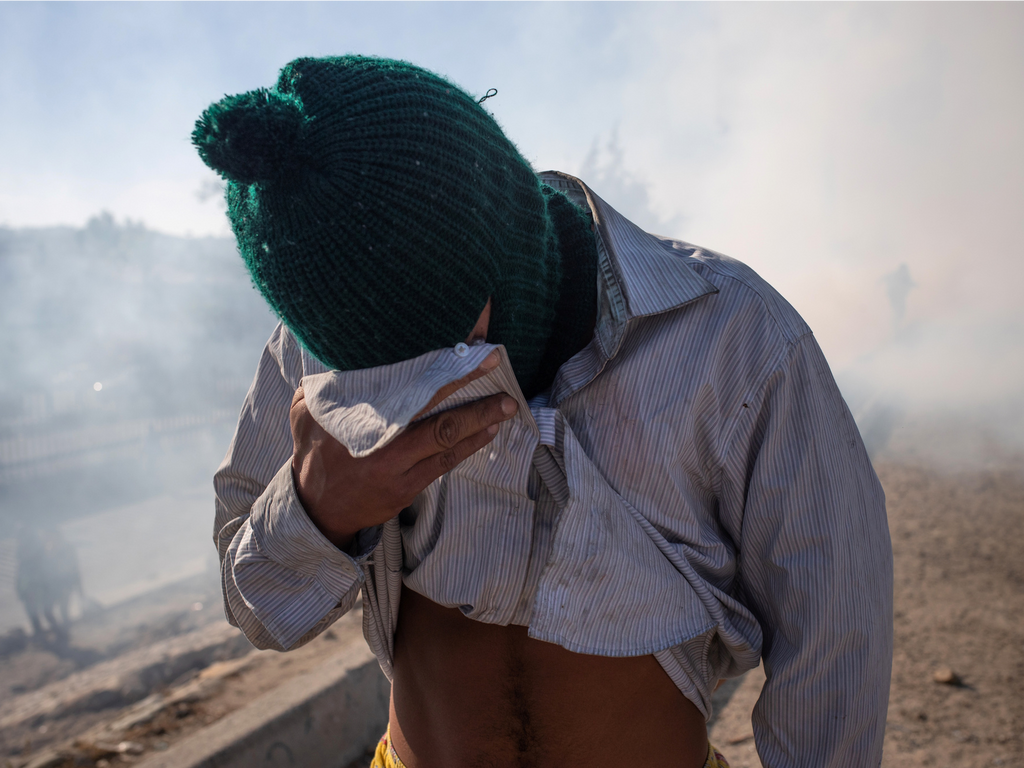
Adrees Latif/Reuters
A 40-year-old Honduran migrant named Maria Meza, with her 13-year-old daughter Jamie and 5-year-old twin daughters Cheili and Saira, also ran from the gas.
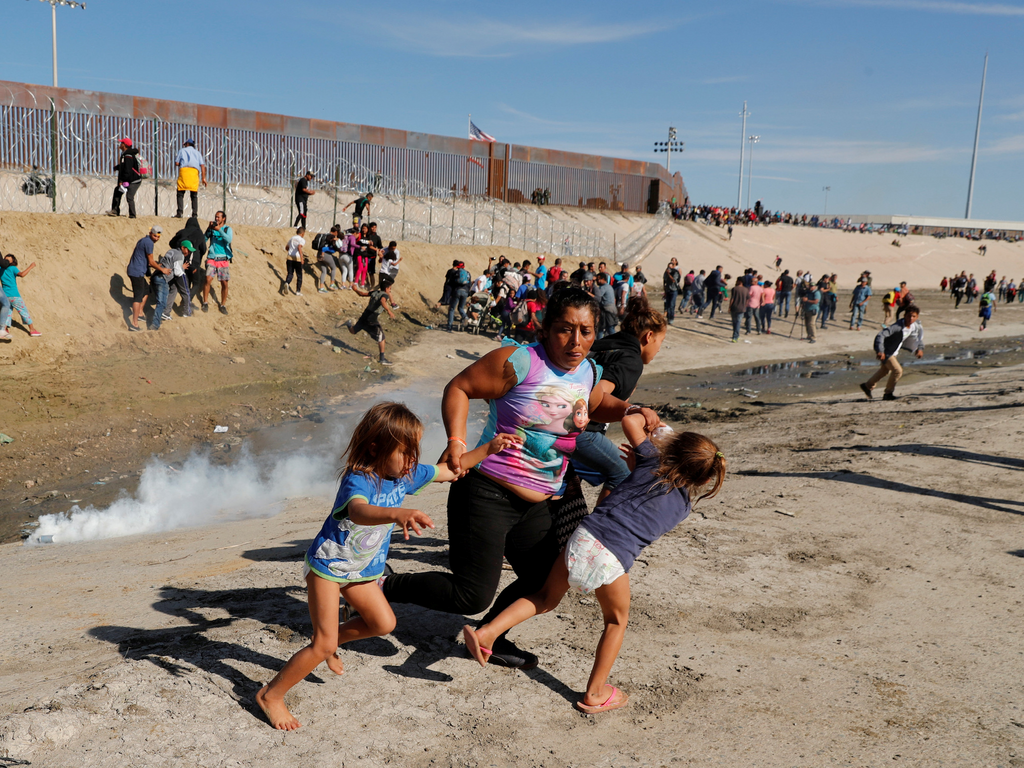
Kim Kyung-Hoon/Reuters
Source: Reuters
The mother of three said she left the Honduran city of San Pedro Sula, known for its violence and crime, two months before.
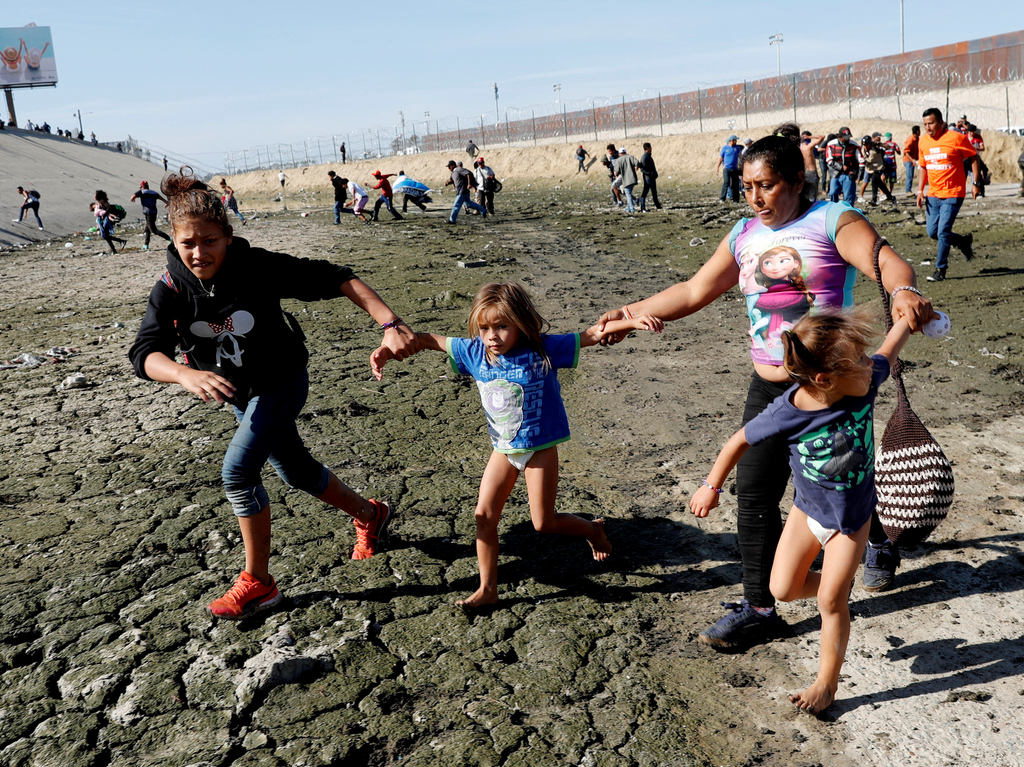
Kim Kyung-Hoon/Reuters
Source: Reuters
Meza told Reuters that she was shocked US border patrol agents would use the tear gas in the proximity of women and children.
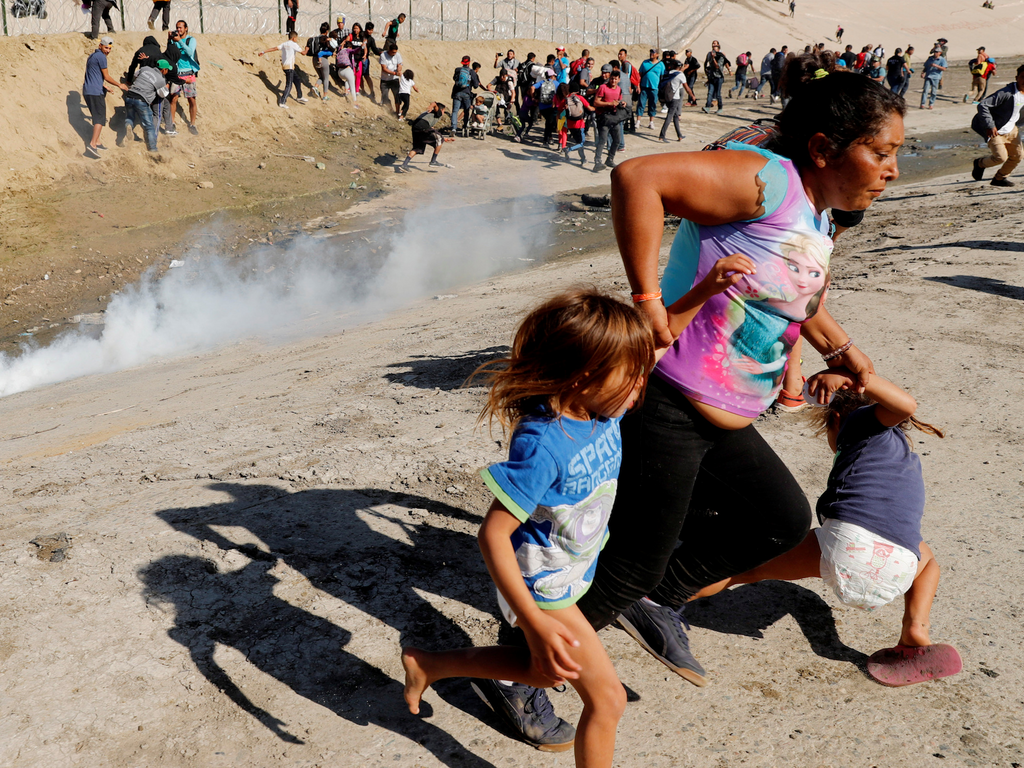
Kim Kyung-Hoon/Reuters
Source: Reuters
"I thought I was going to die with them because of the gas," Meza later told Reuters.
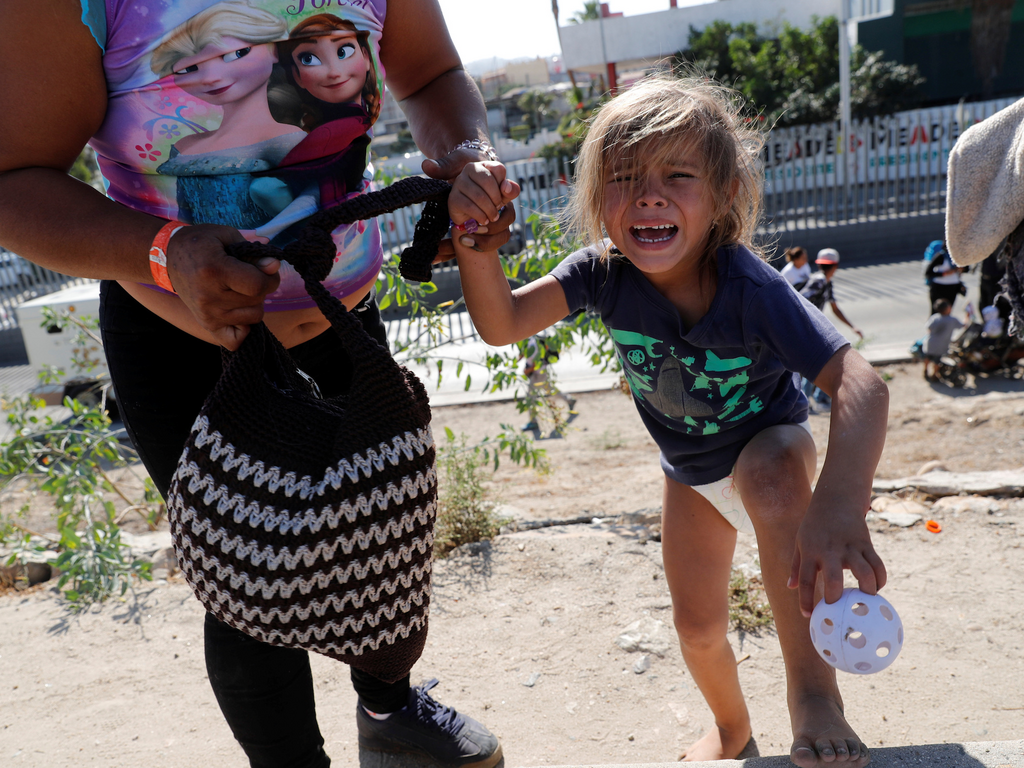
Kim Kyung-Hoon/Reuters
Source: Reuters
They eventually made it to safety.
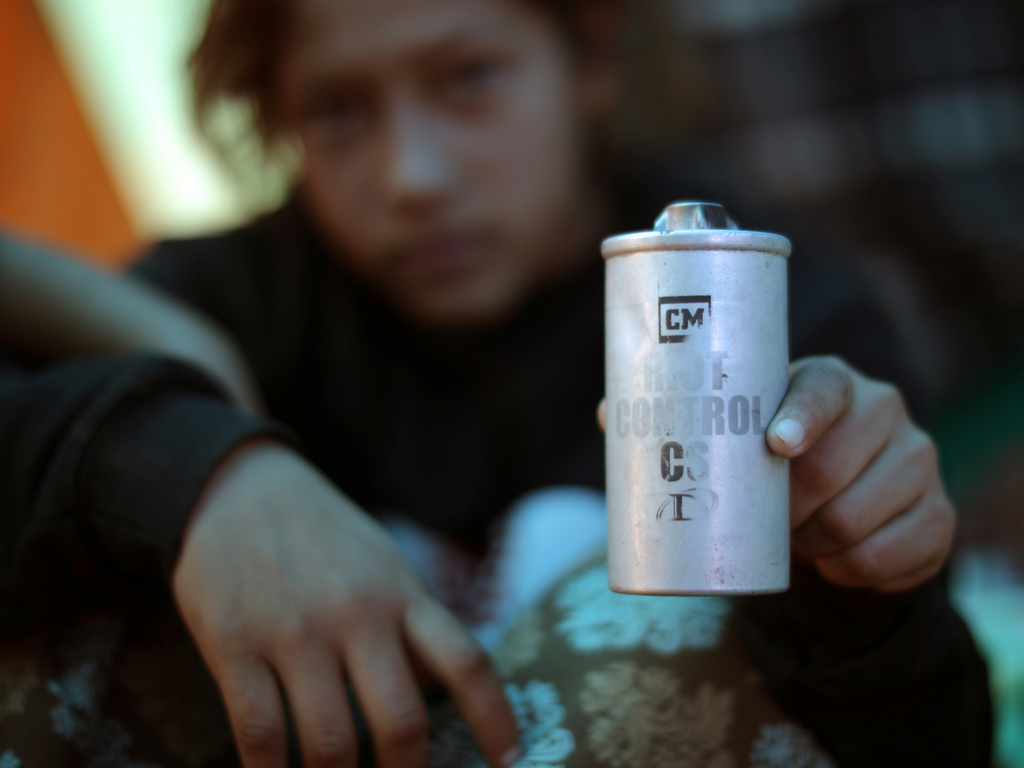
Lucy Nicholson/Reuters
Source: Reuters
The family is now in the makeshift shelter in Tijuana.
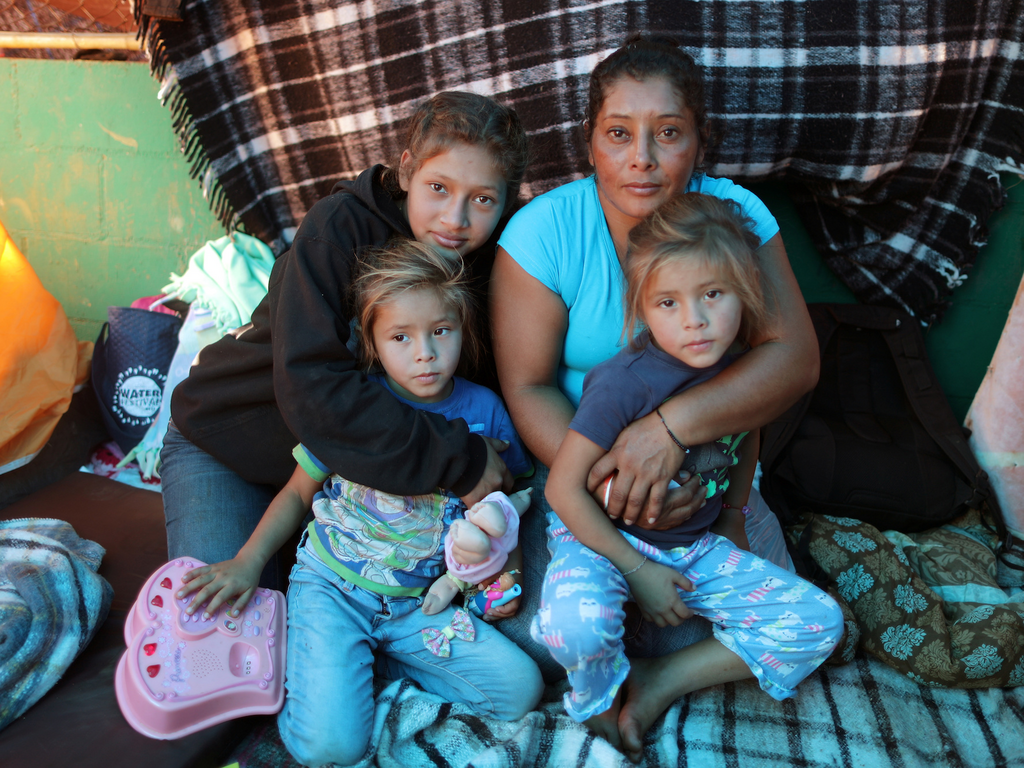
Kim Kyung-Hoon/Reuters
Source: Reuters
Theyll most likely take shelter there for a while as they wait to claim asylum.
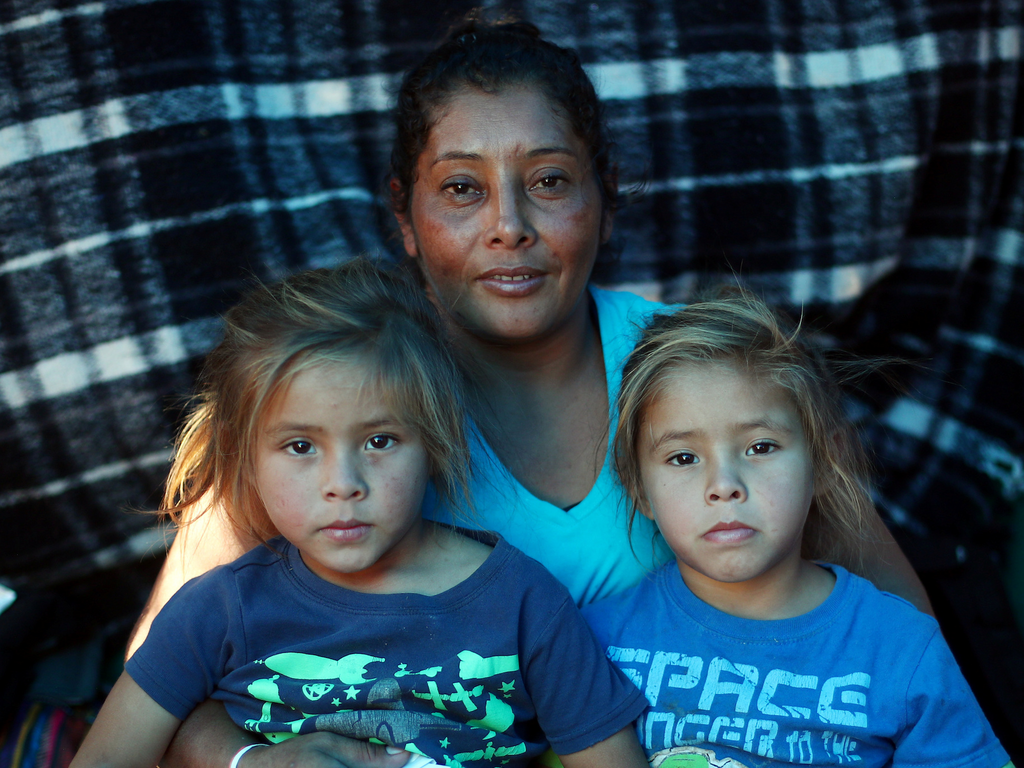
Kim Kyung-Hoon/Reuters
Source: Reuters
Meza said she hopes to be granted asylum into the US and then will make her way to Louisiana, where the father of her children lives.
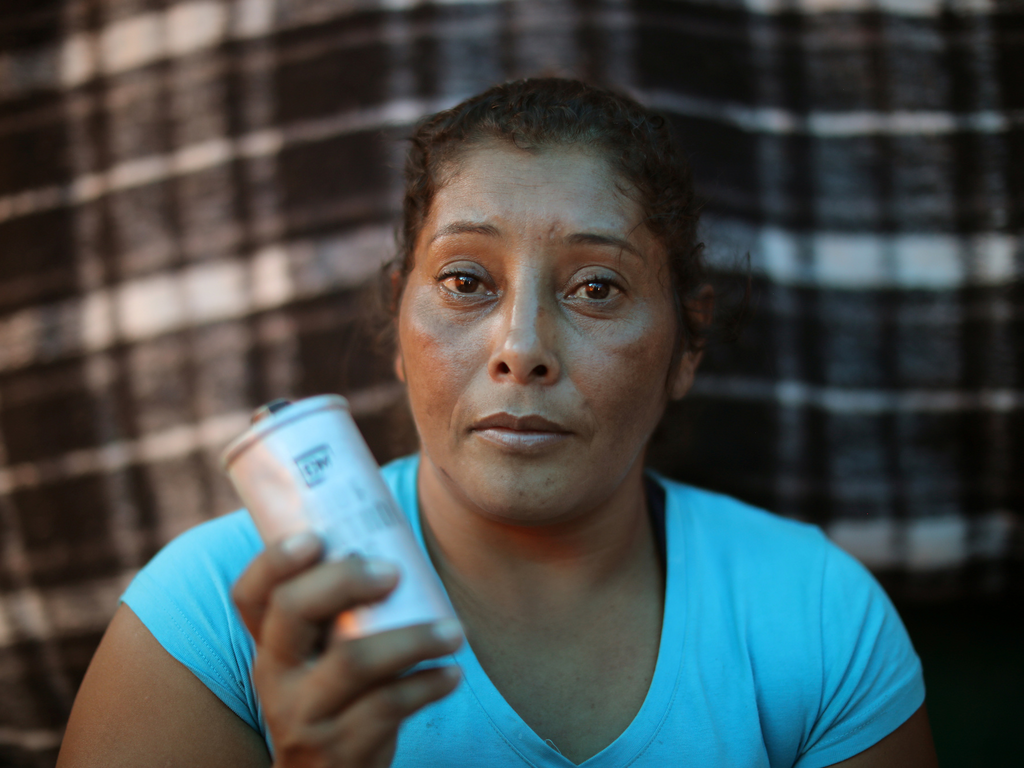
Kim Kyung-Hoon/Reuters
Source: Reuters
Other migrants have also settled into the temporary sanctuary in Tijuana, including 23-year-old Kevin, seen here drinking syrup.
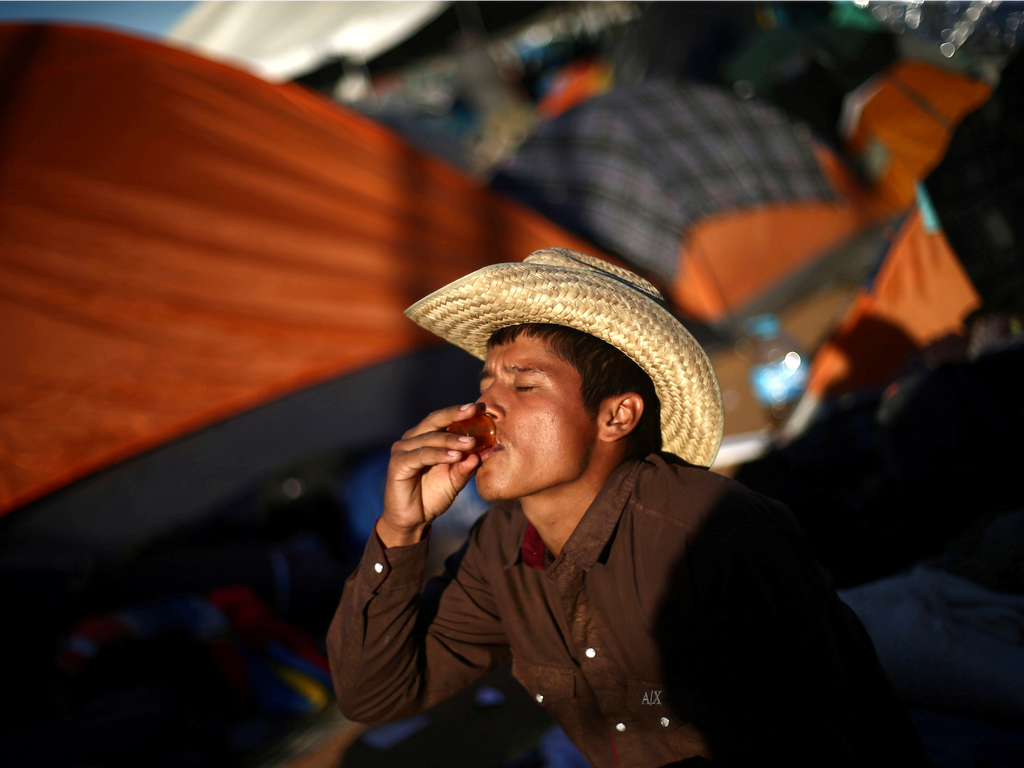
Edgard Garrido/Reuters
So has Honduran migrant Katherine Arito, 17 years old, who made the trek by herself along the caravan.
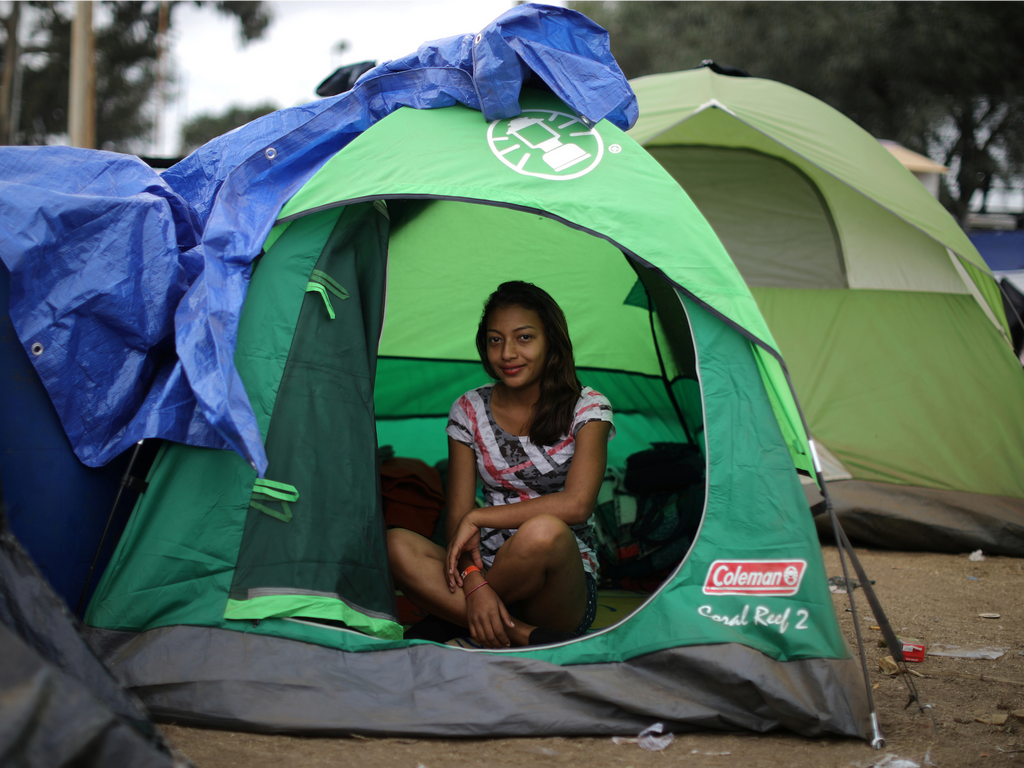
Lucy Nicholson/Reuters
Source: Reuters
But being allowed to enter the US could take months, with the waiting list sitting at 3,000 before this caravan even showed up and officials processing fewer than 100 claims a day.
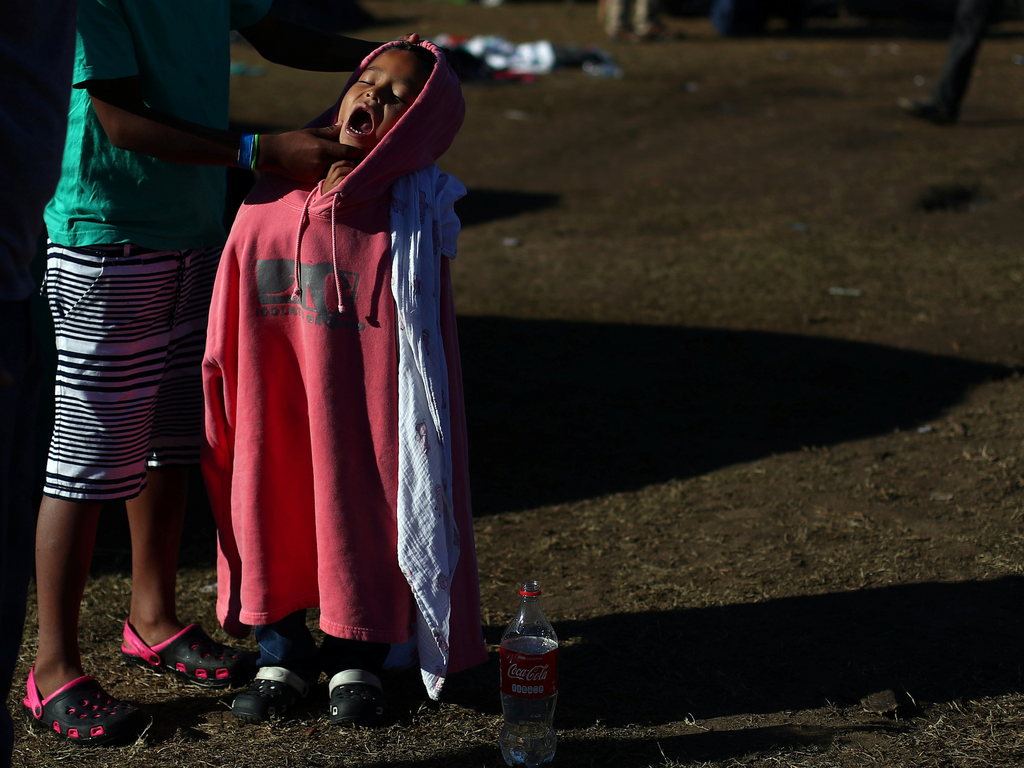
Hannah McKay/Reuters
Source: Business Insider
Many migrants were discouraged from pursuing entry to the US following the clash with border patrol on Sunday.
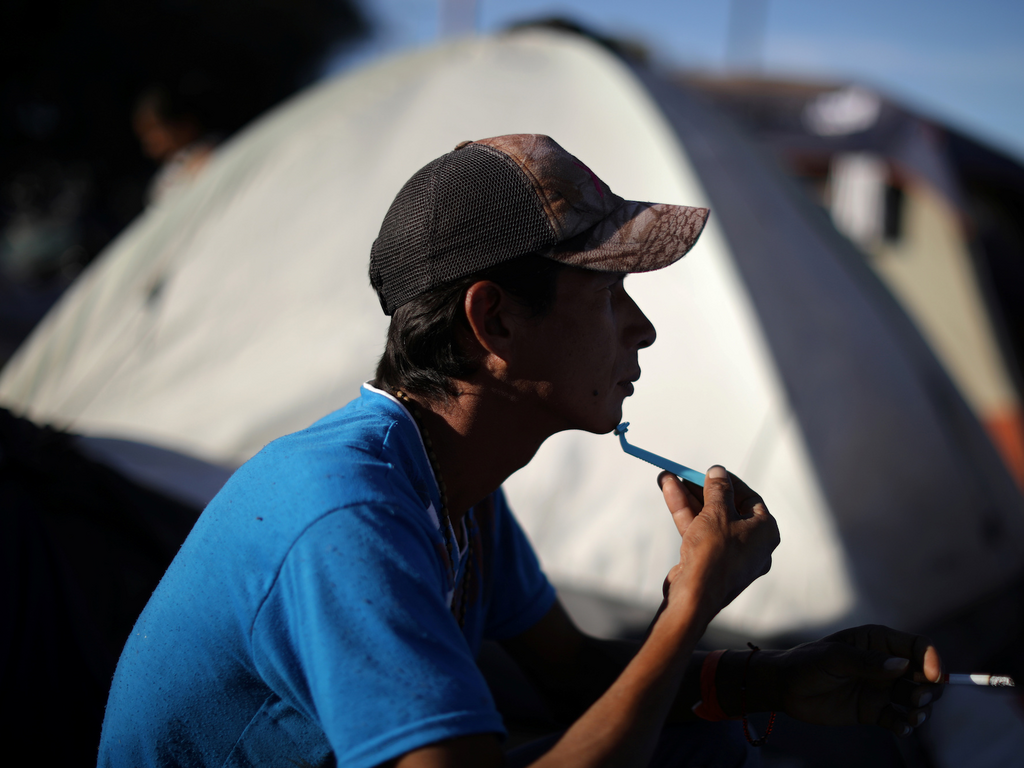
Lucy Nicholson/Reuters
Source: Business Insider
As a result, there was an uptick in interest from migrants to begin the process for applying for asylum in Mexico.
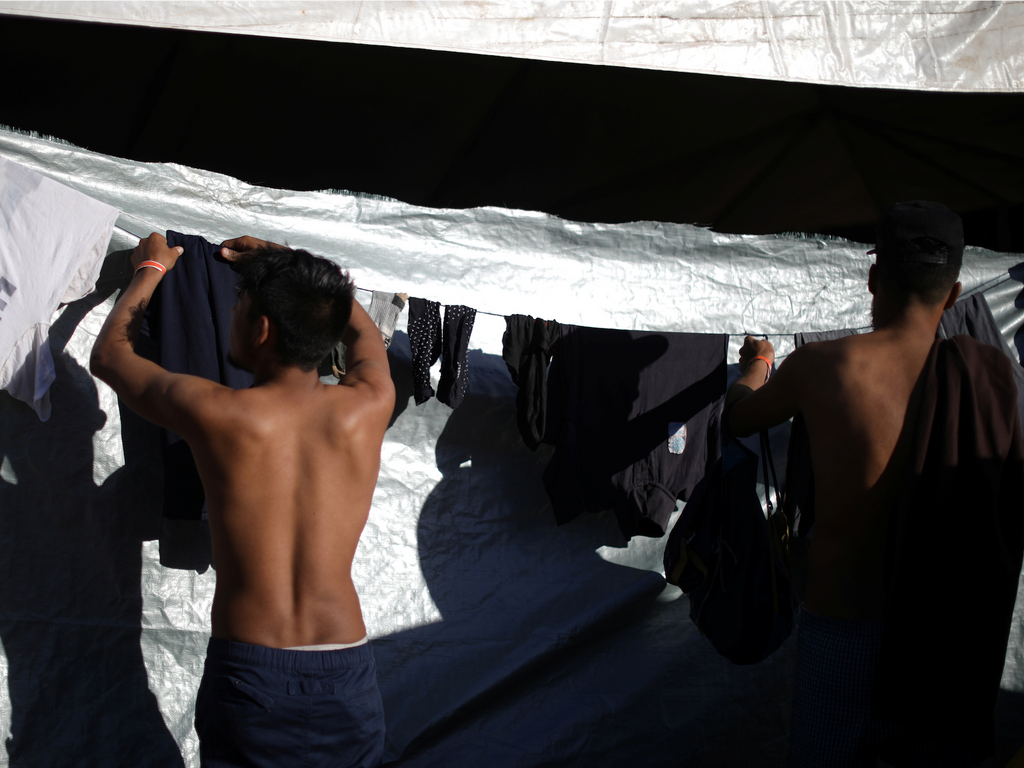
Lucy Nicholson/Reuters
Source: Business Insider
Honduran migrant Elizabeth Umanzor and her family, including her 6-year-old daughter Gina, told the AP that they plan to find work in Mexico while they wait to claim asylum in the US. Umanzors husband, a welder, has already found work, and she hopes to make a living selling baleadas, traditional Honduran dishes.
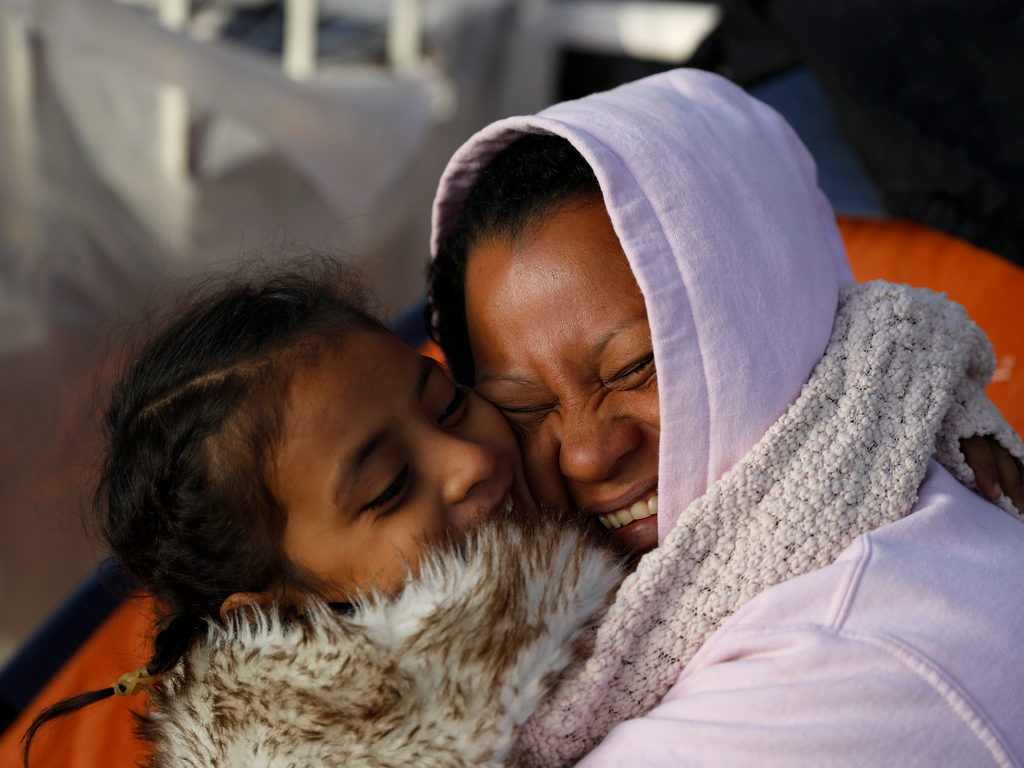
Rebecca Blackwell/AP
Source: Associated Press
Honduran migrant Harol Ardon is also planning to stay in Mexico. "Im going to an interview with (Mexican) migration to request permission to be here, to be able to find a job," Ardon told Reuters. "Ive already been given a job but I need to have my papers in order to be able to work and walk around freely here in the city."
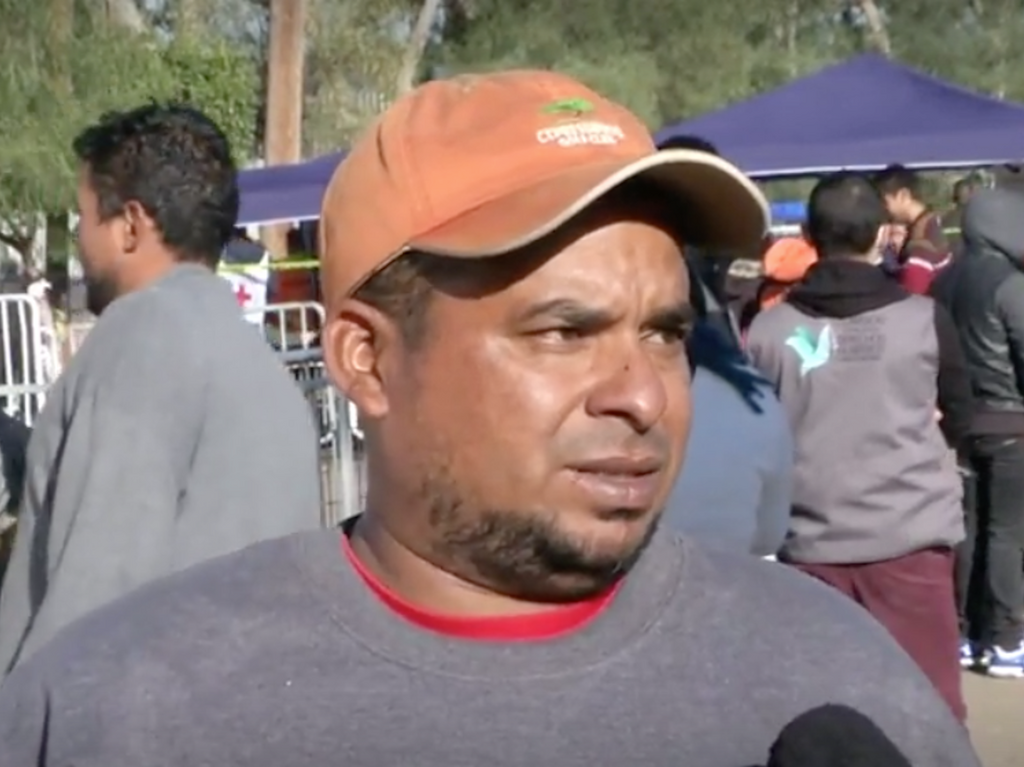
Reuters
Source: Reuters
One Guatemalan migrant, Jose Castillo (not pictured), told the Associated Press that the nearby town of Rosarito is seen as a good place to "earn money and live well."
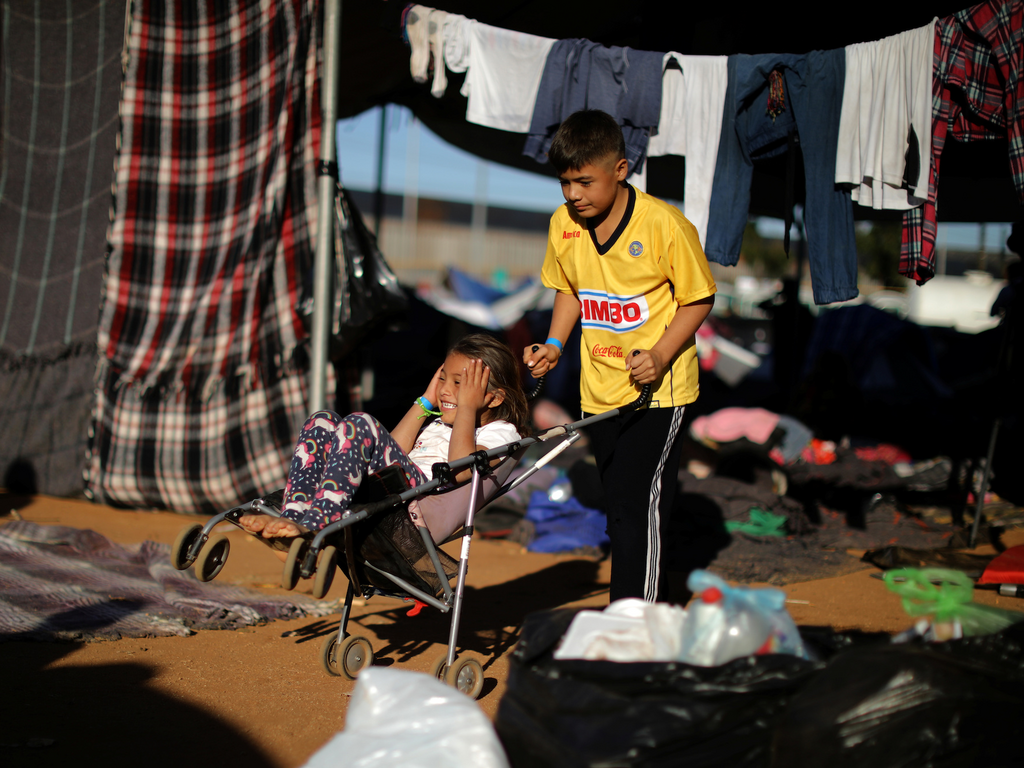
Lucy Nicholson/Reuters
Source: Business Insider
Others are possibly turning to Mexican cities like Monterey or Mexicali to find work and a living.
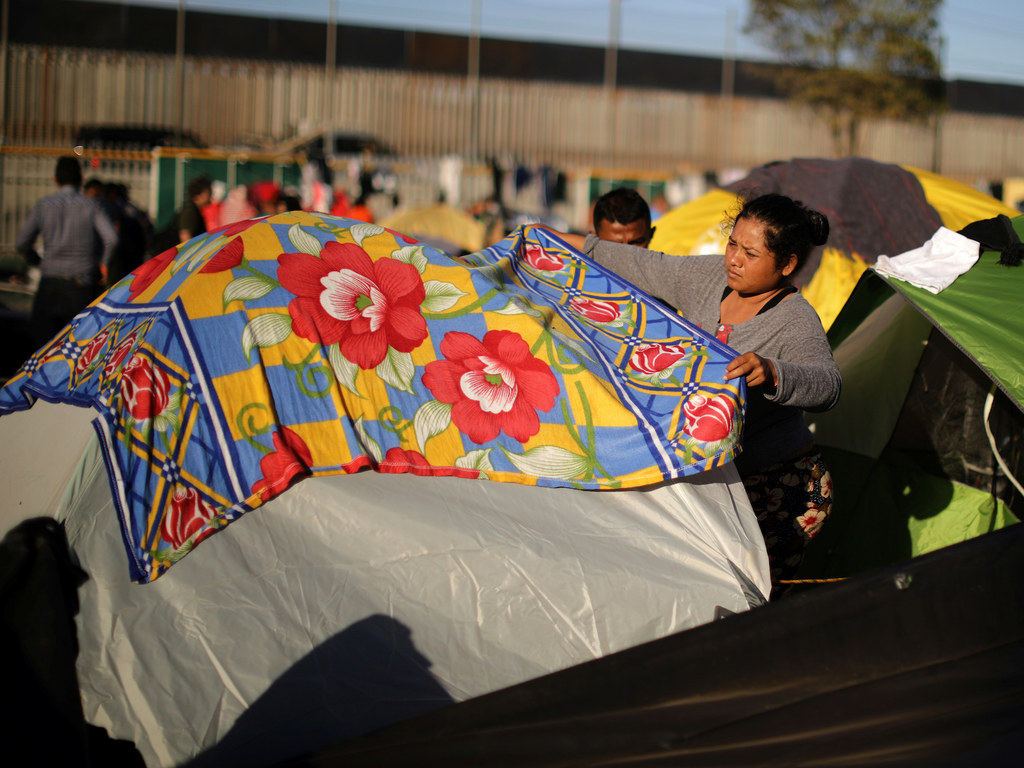
Lucy Nicholson/Reuters
Source: Business Insider
The majority of the available work in Mexico would be factory jobs in the "maquiladores."
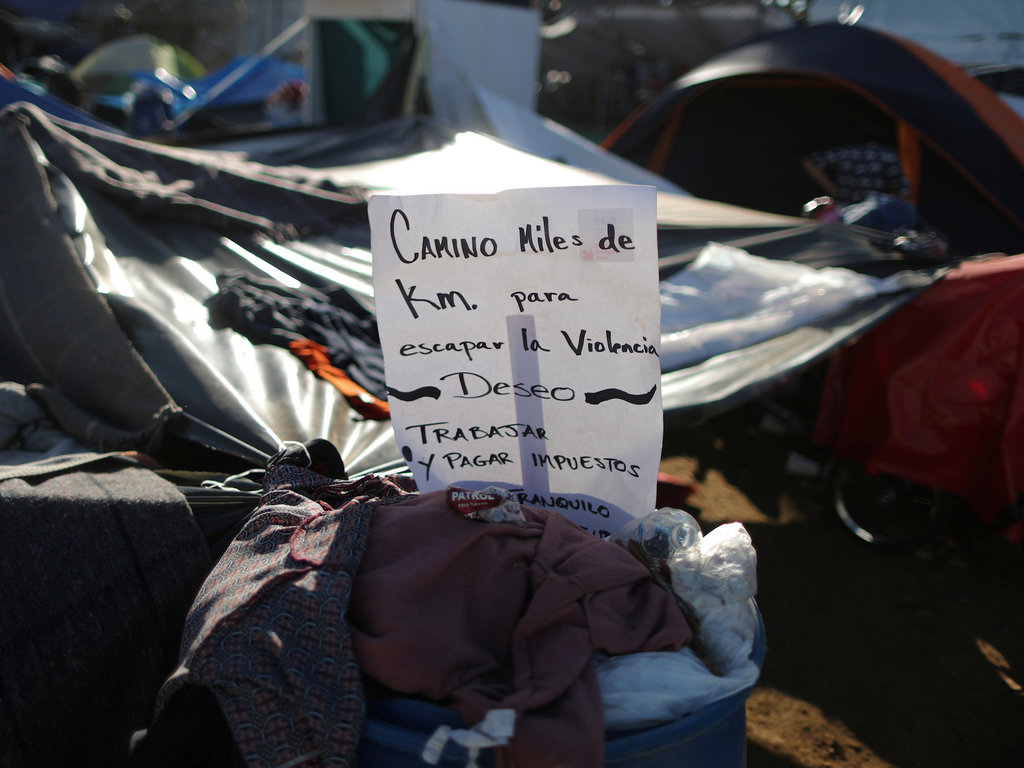
Lucy Nicholson/Reuters
Source: Business Insider
Others like El Salvador migrant Josue Enrique and his mother are considering returning home following Sundays clash with border police.
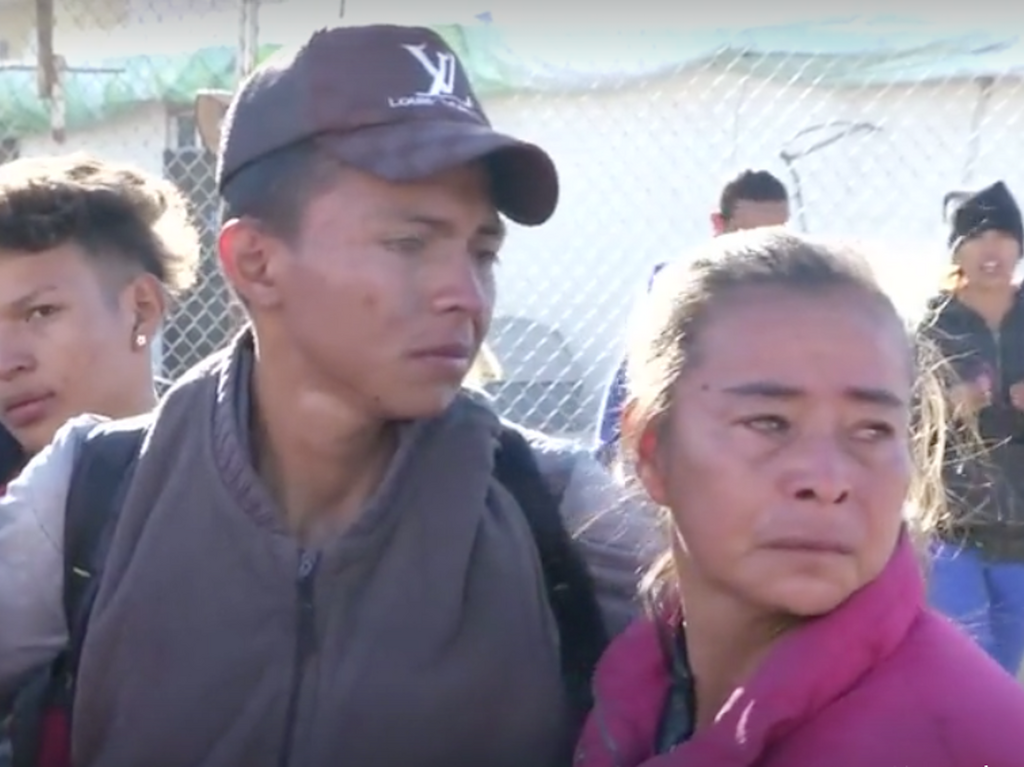
Reuters
Source: Reuters
"The president wont let us through," Enrique told Reuters in Spanish. "He doesnt want us over there and there are rumors some (Central American migrants who have already crossed) are being killed. Im going (home) because I dont want to die either here or in that country."
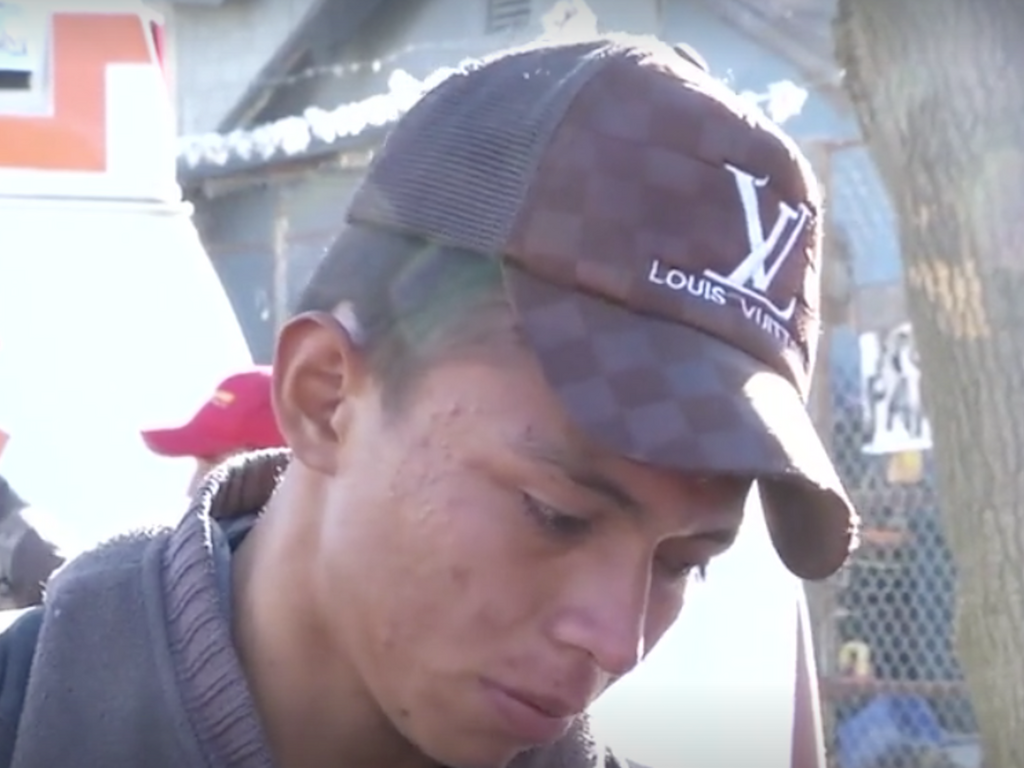
Reuters
Source: Reuters

)
)
)
)
)
)